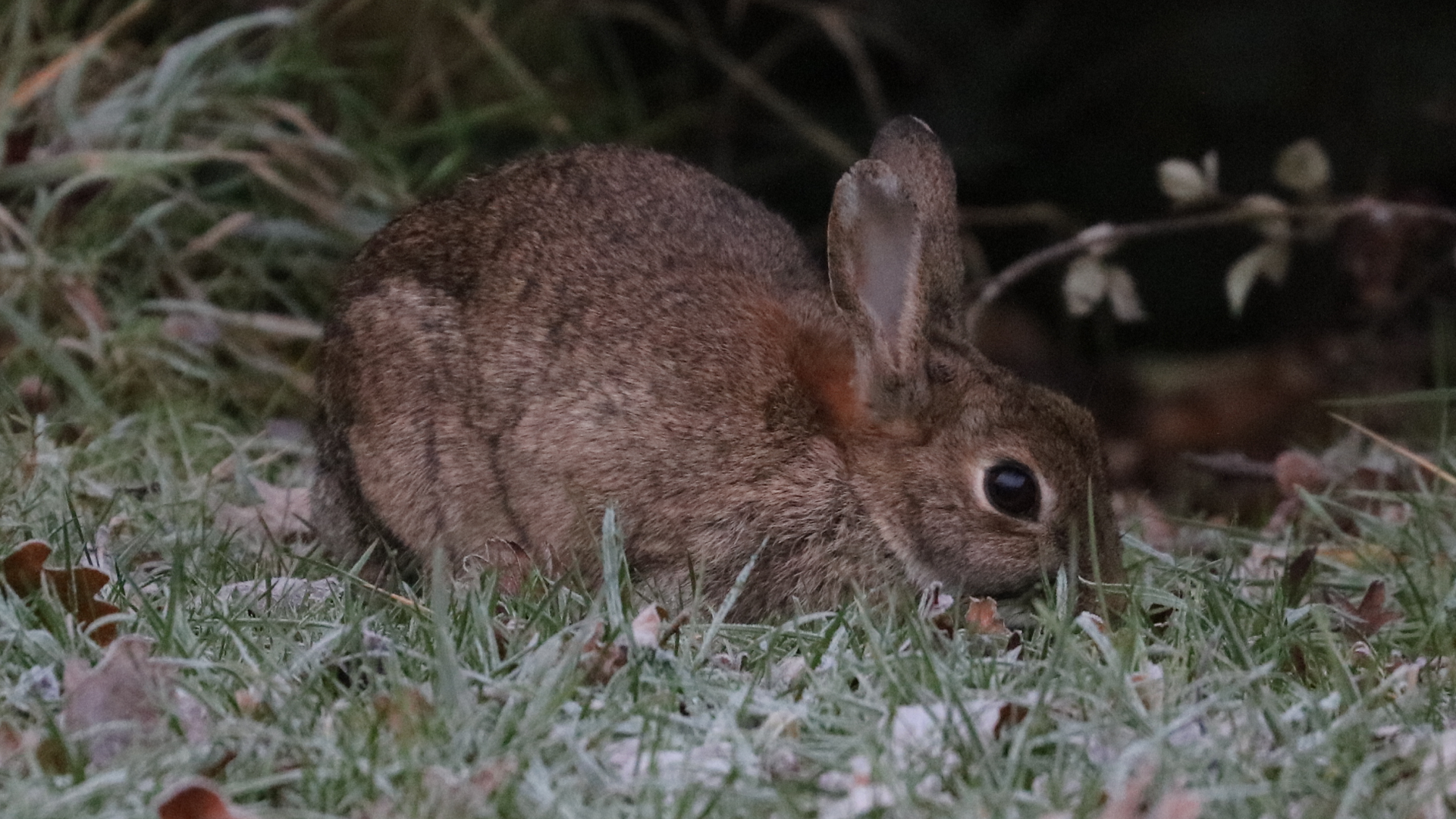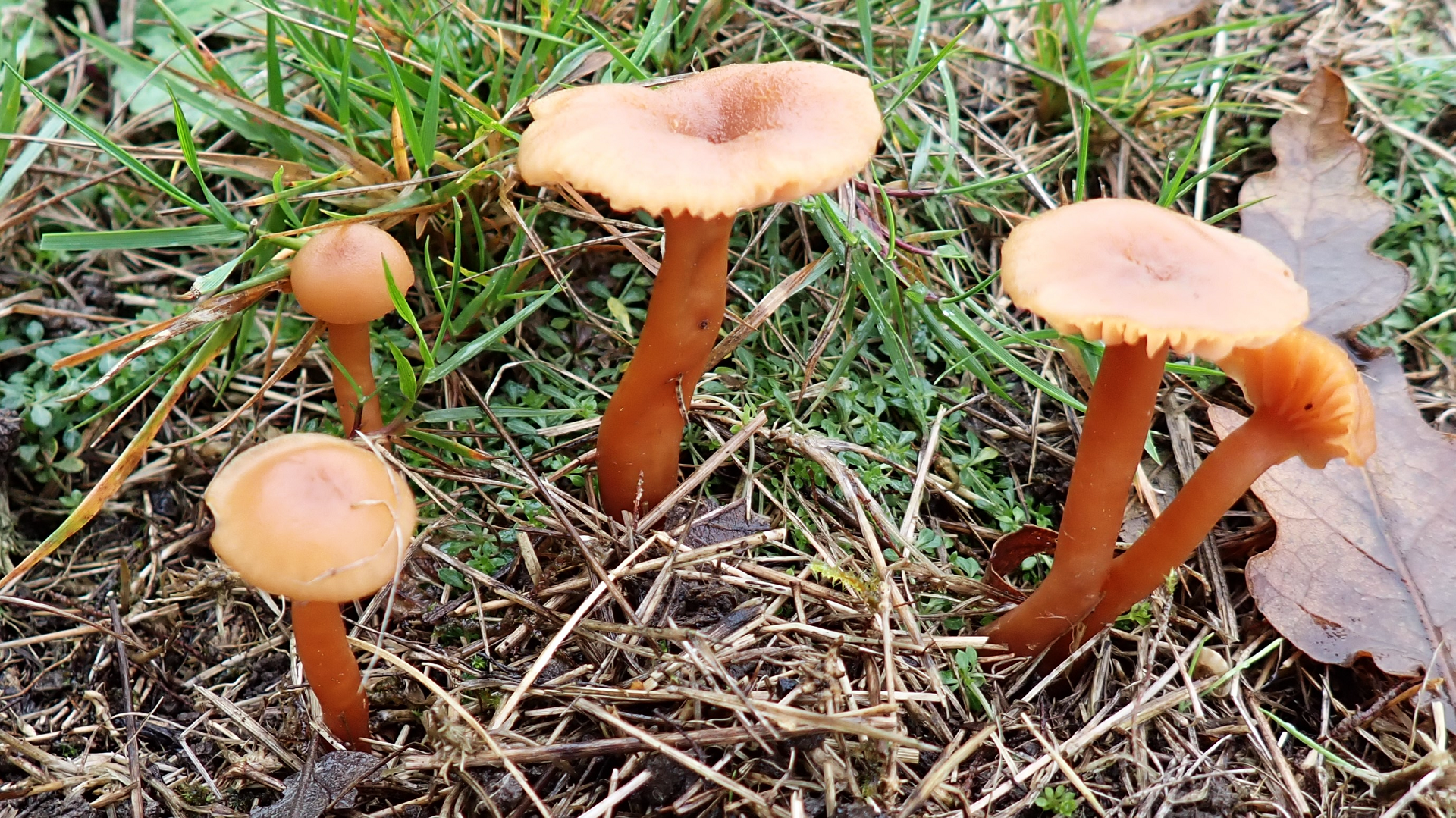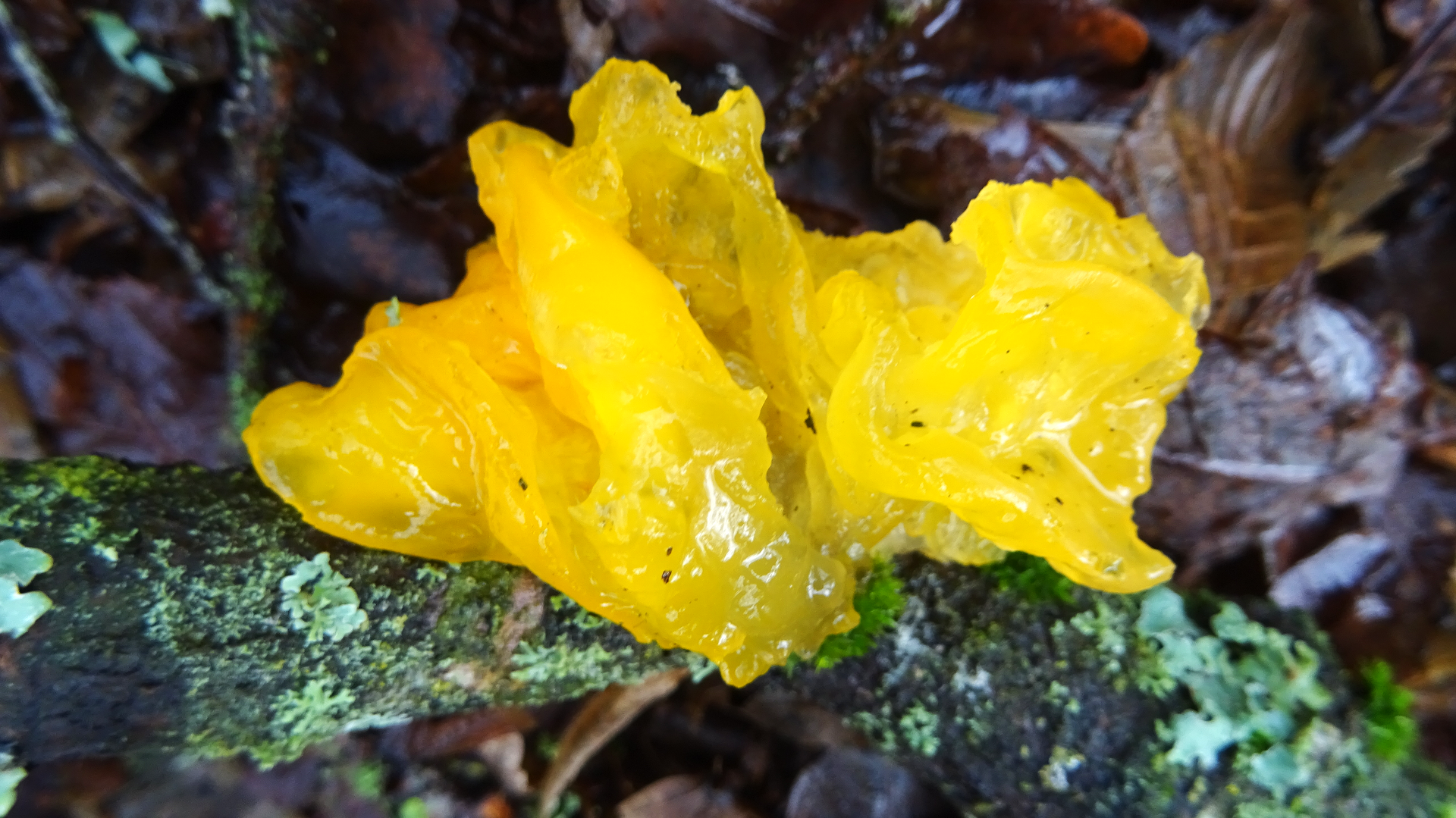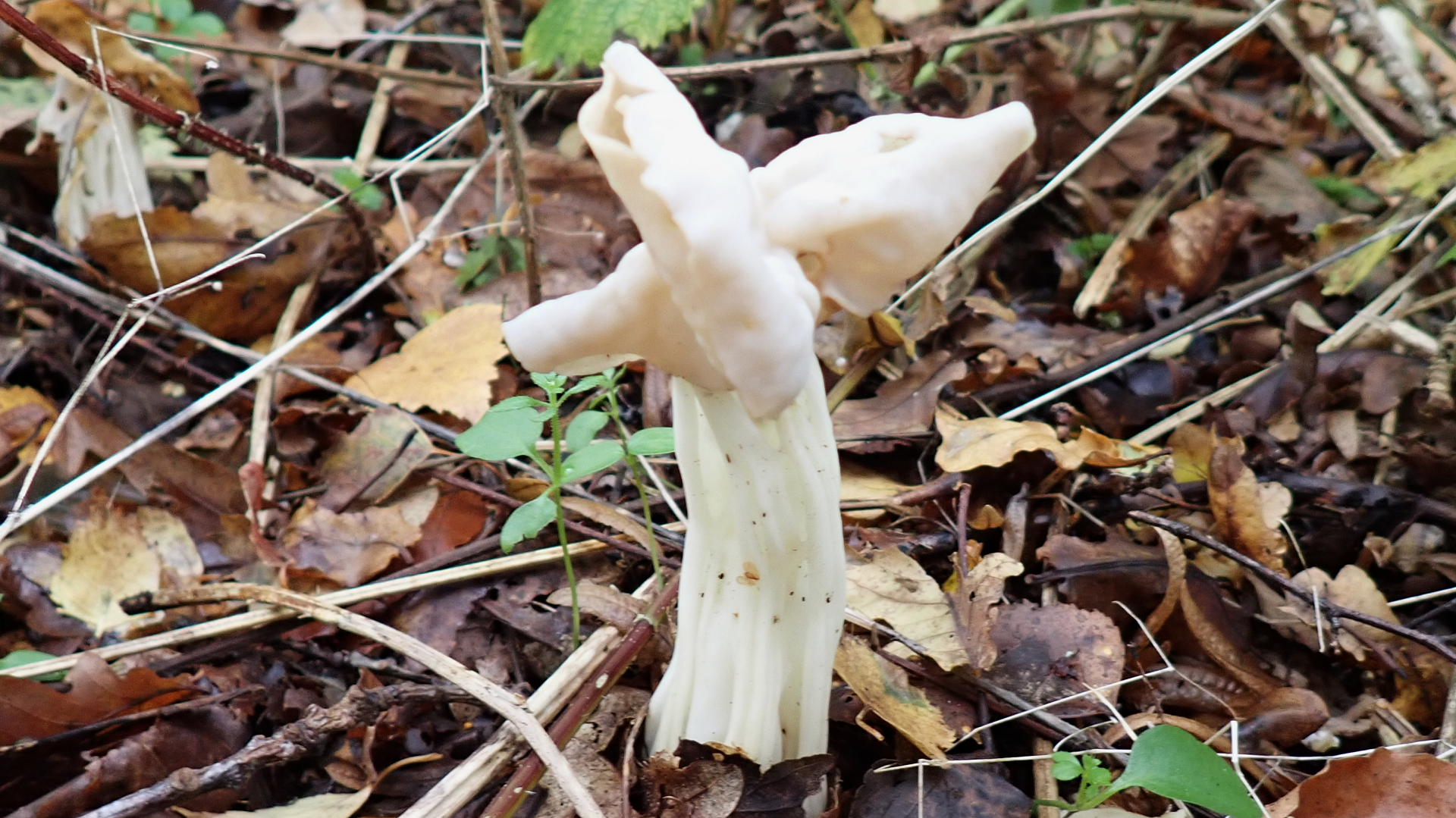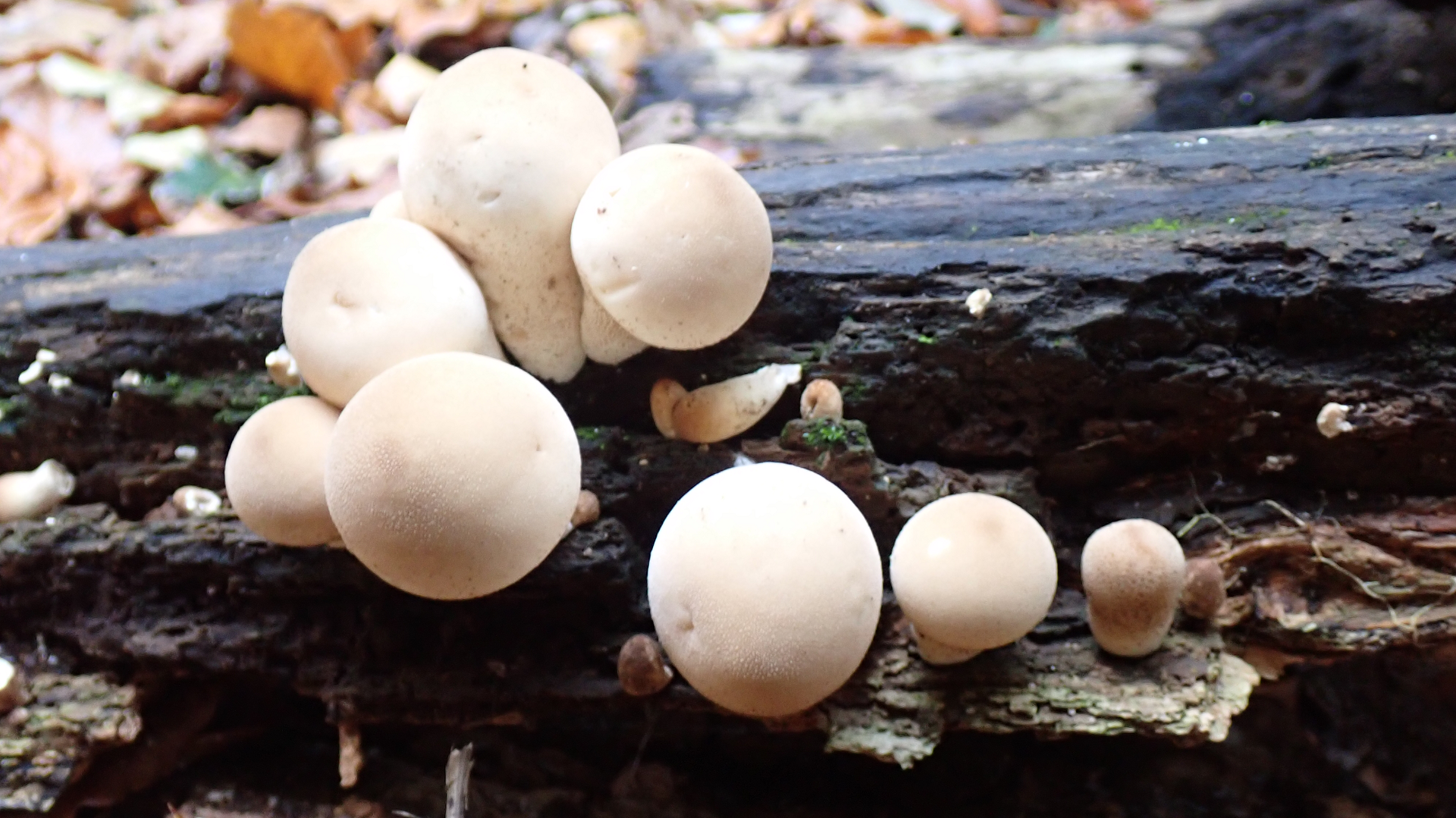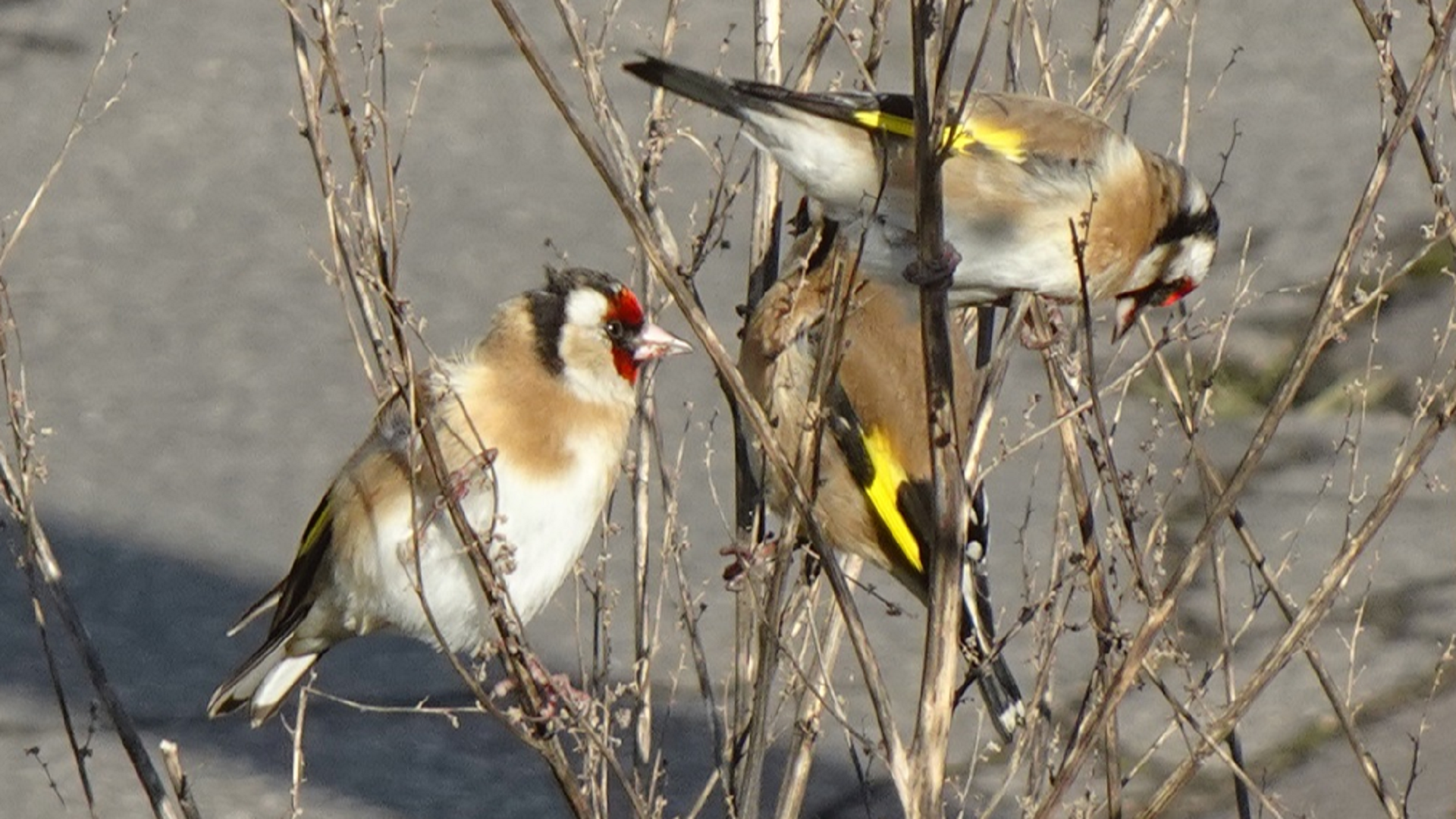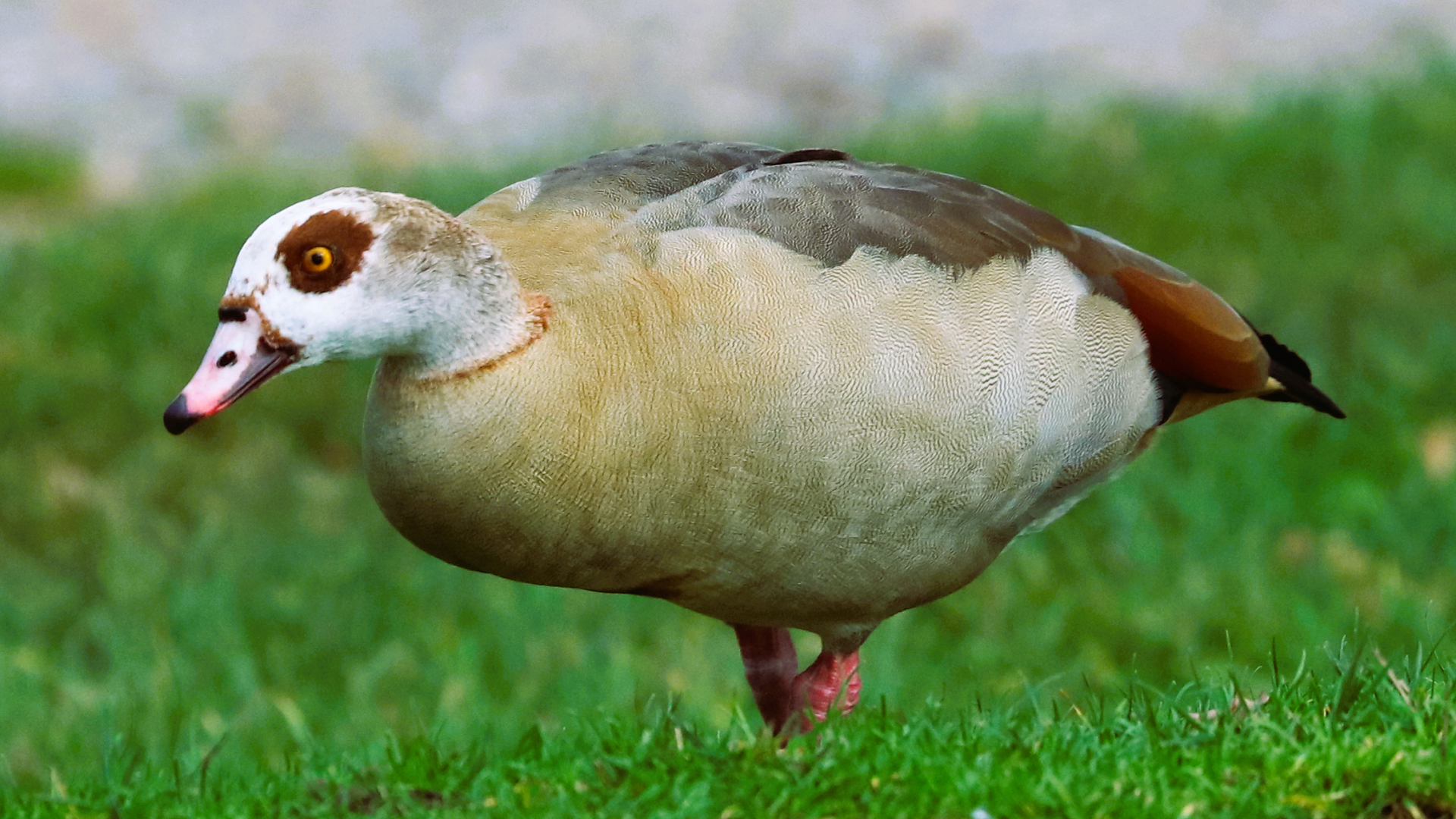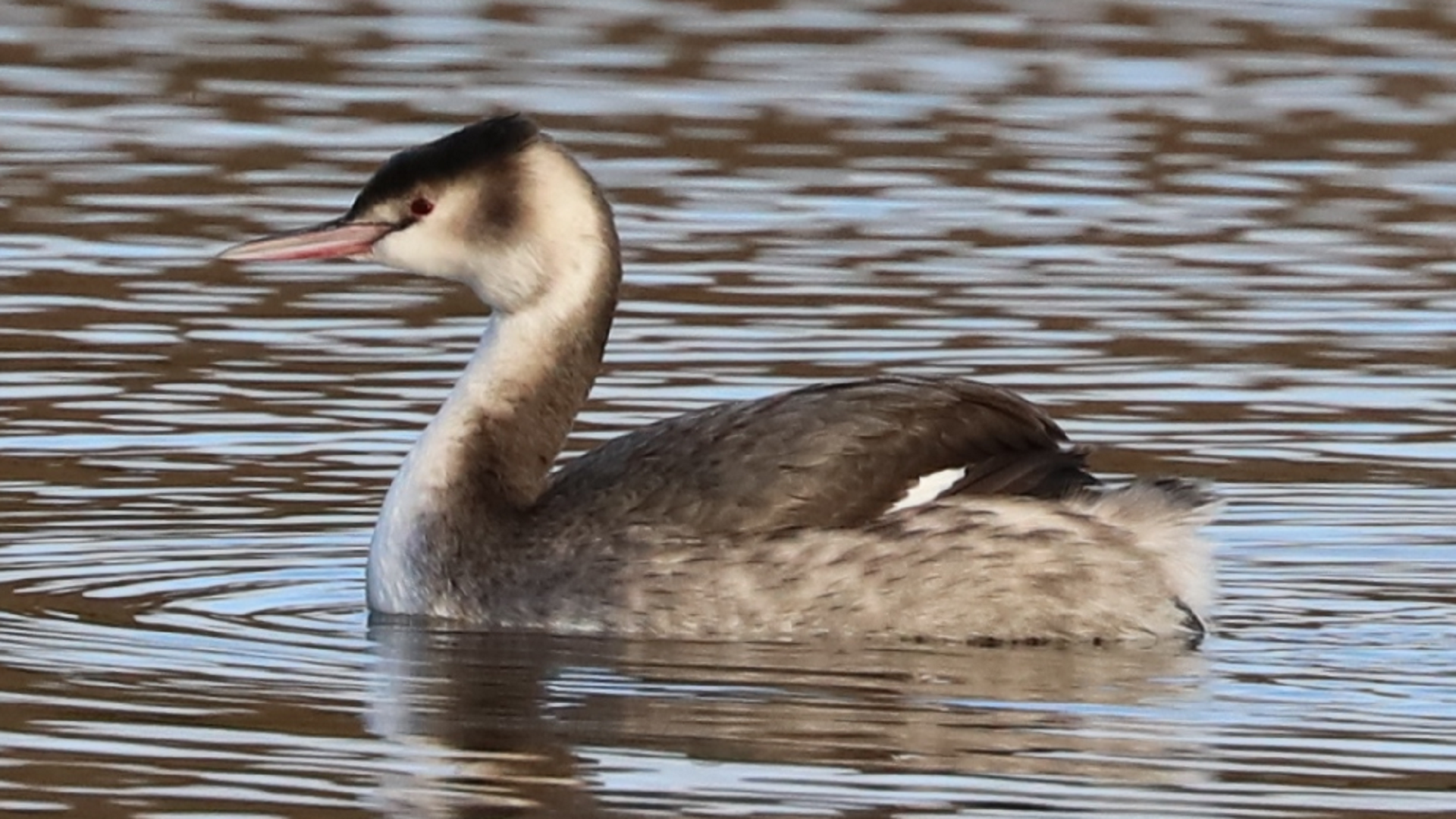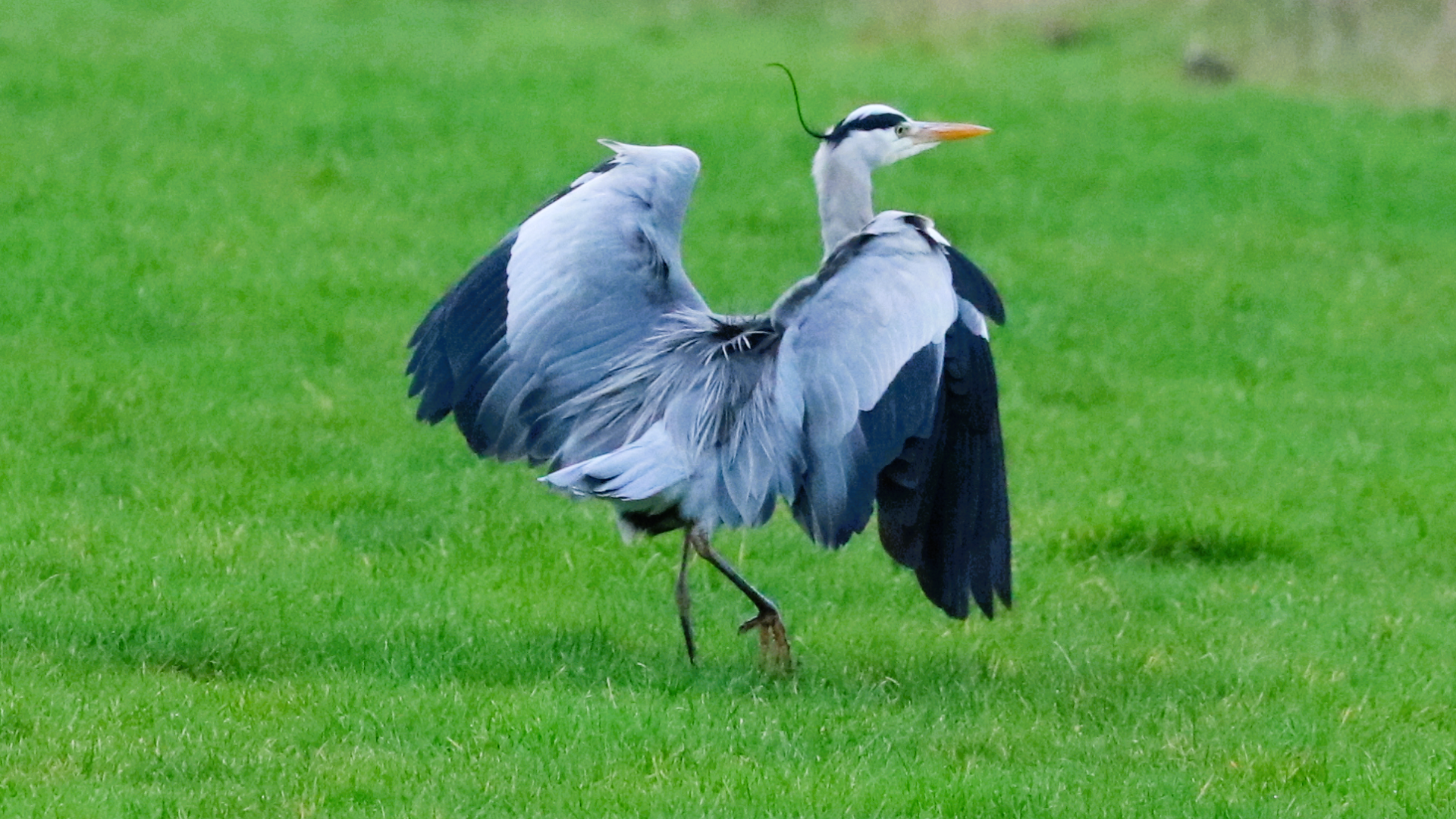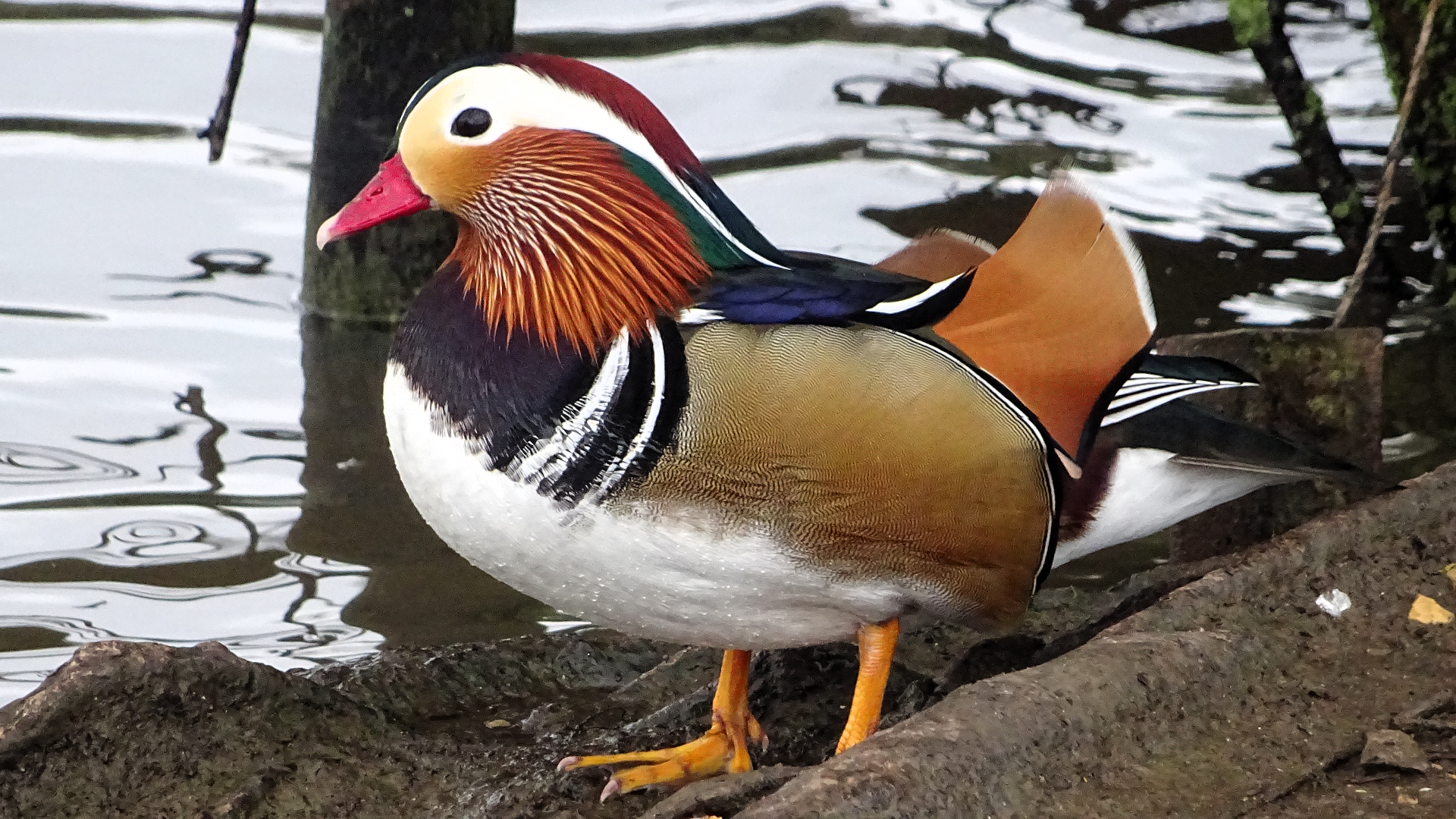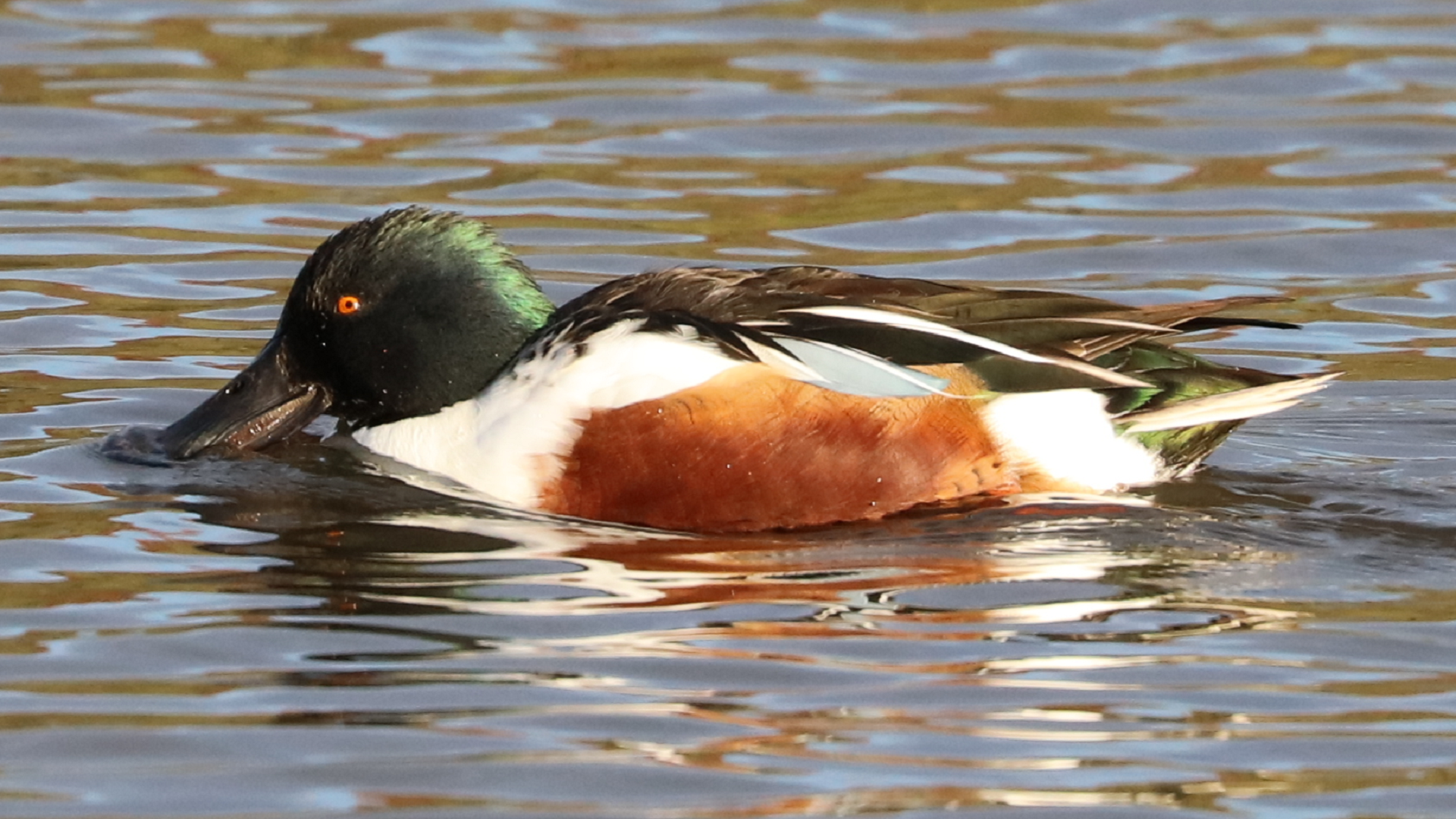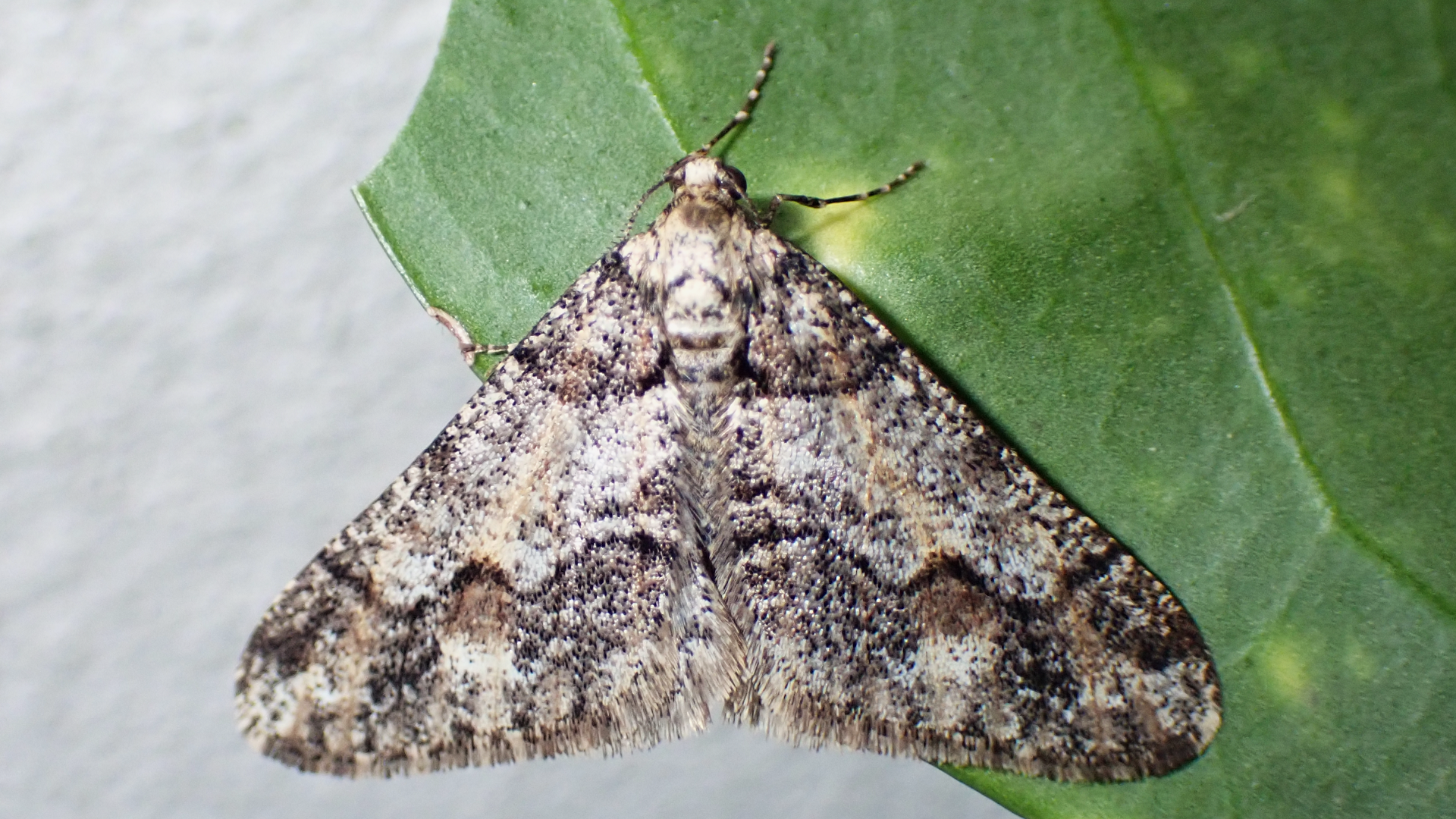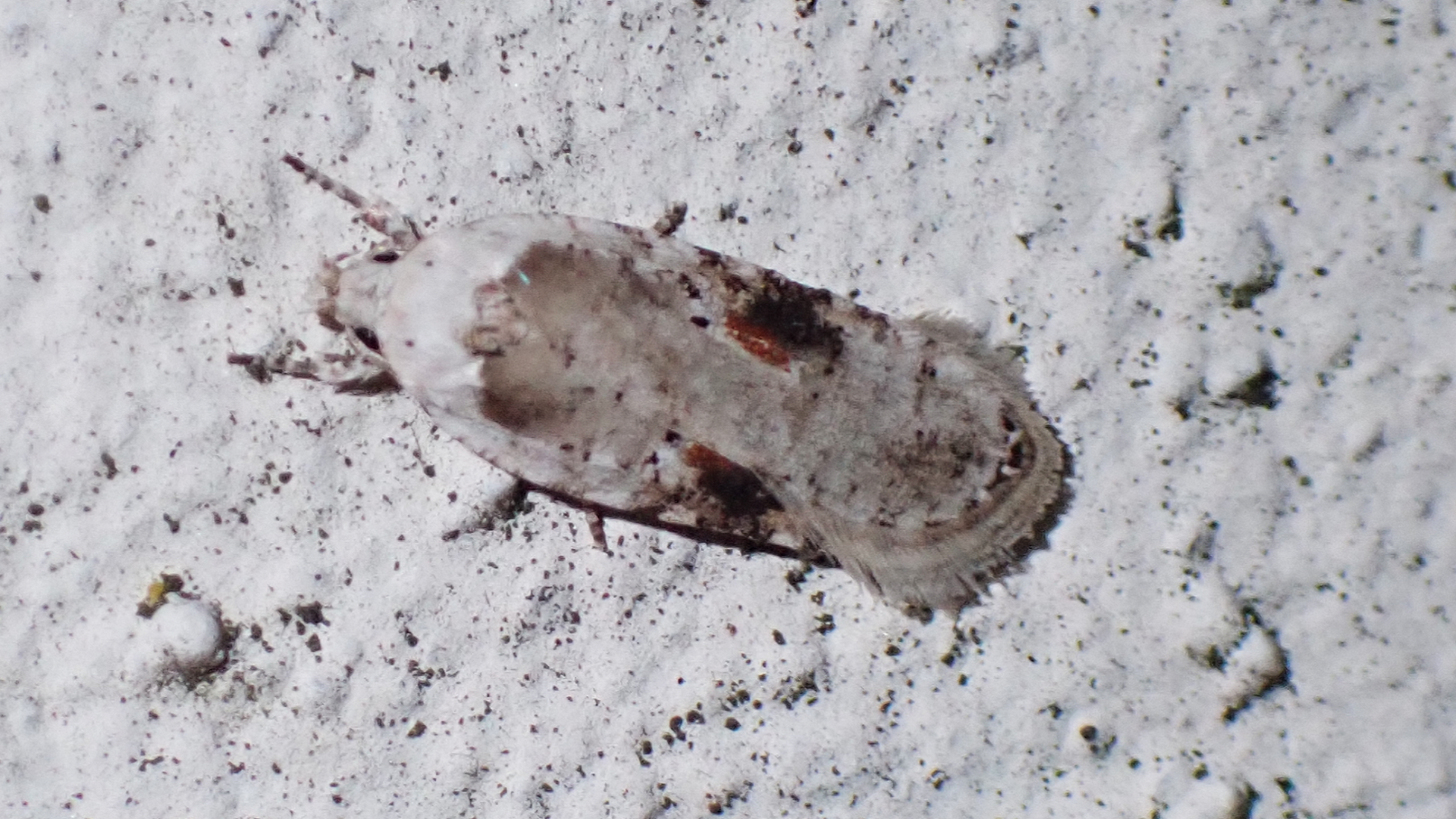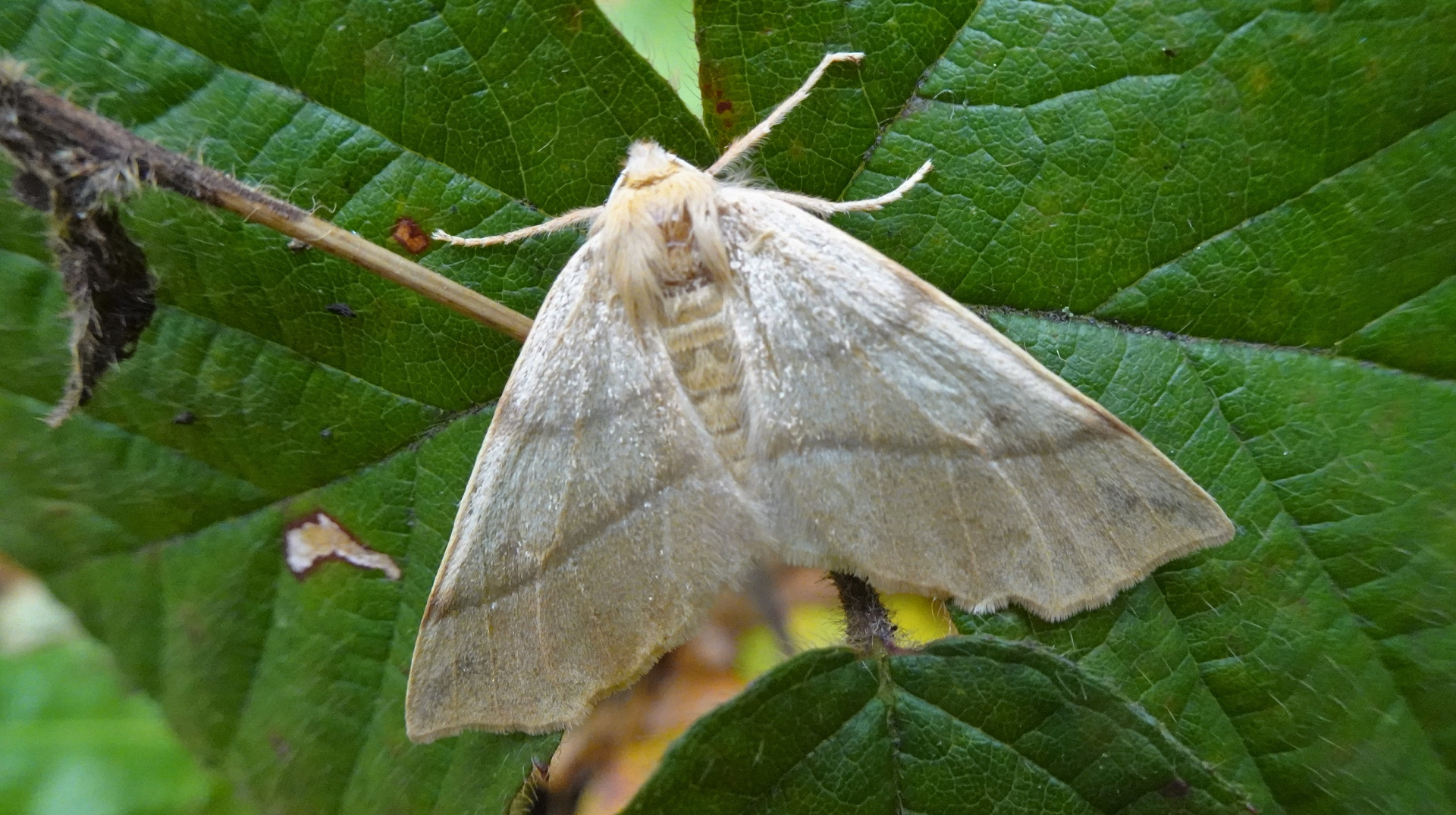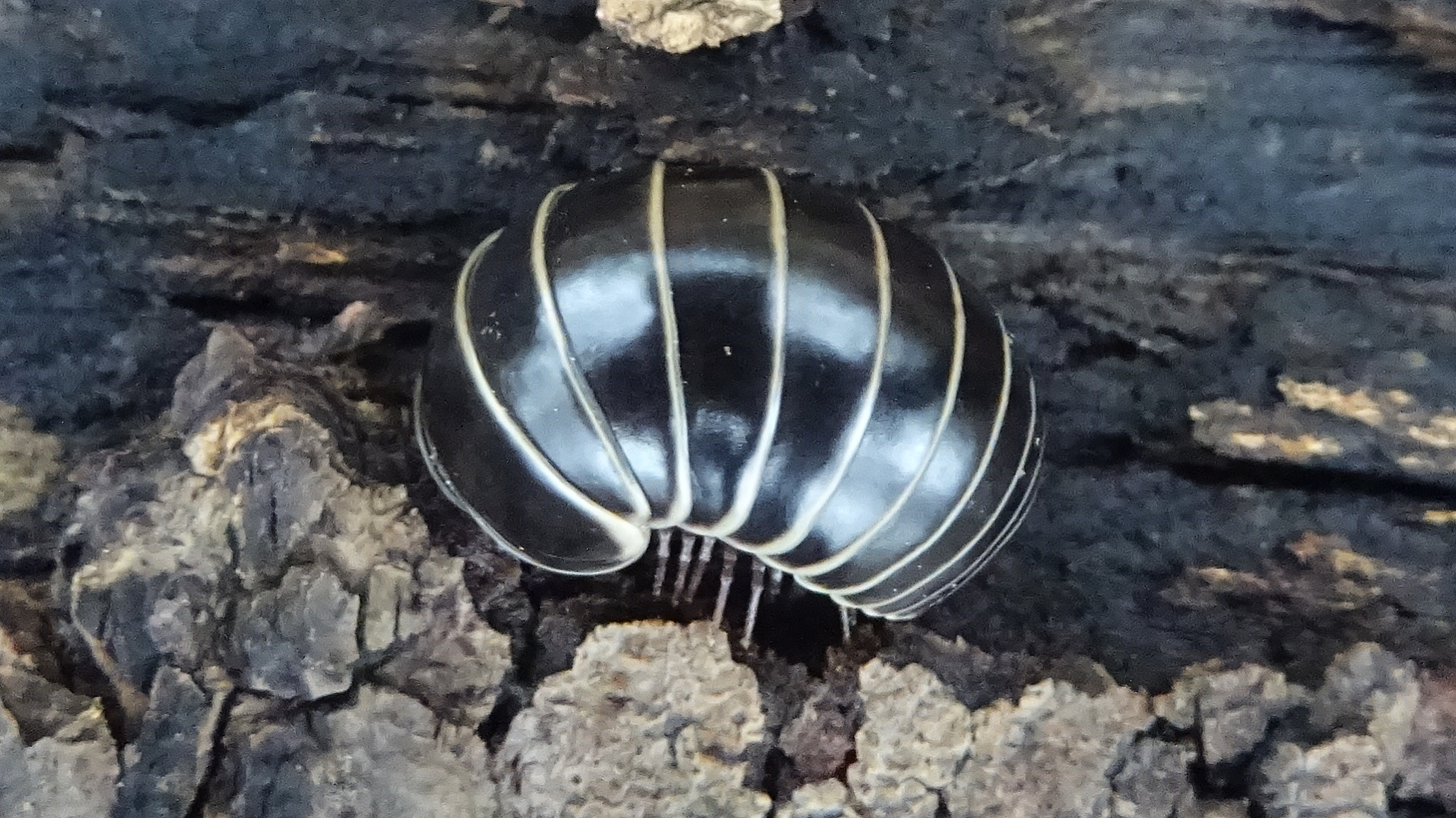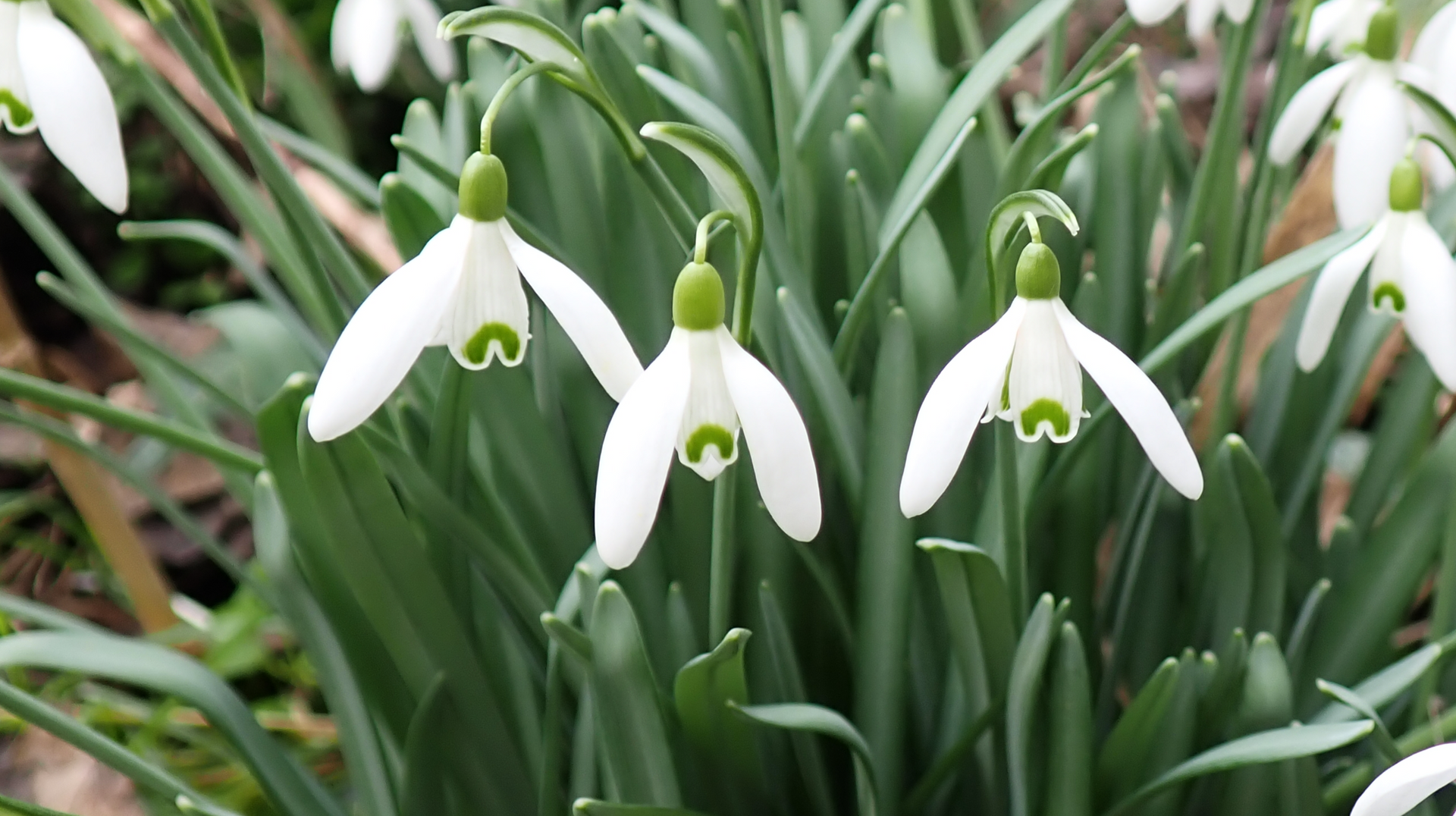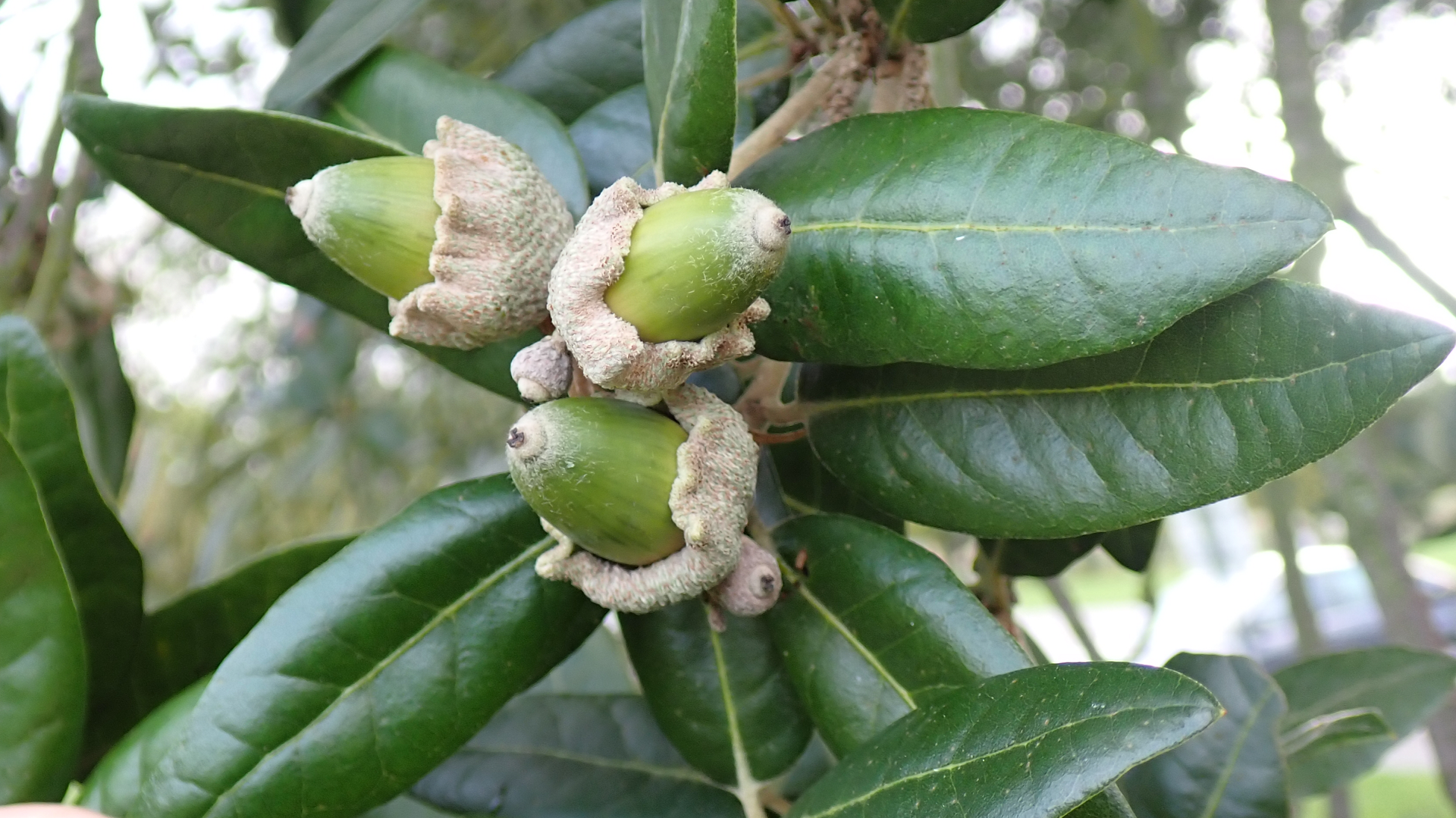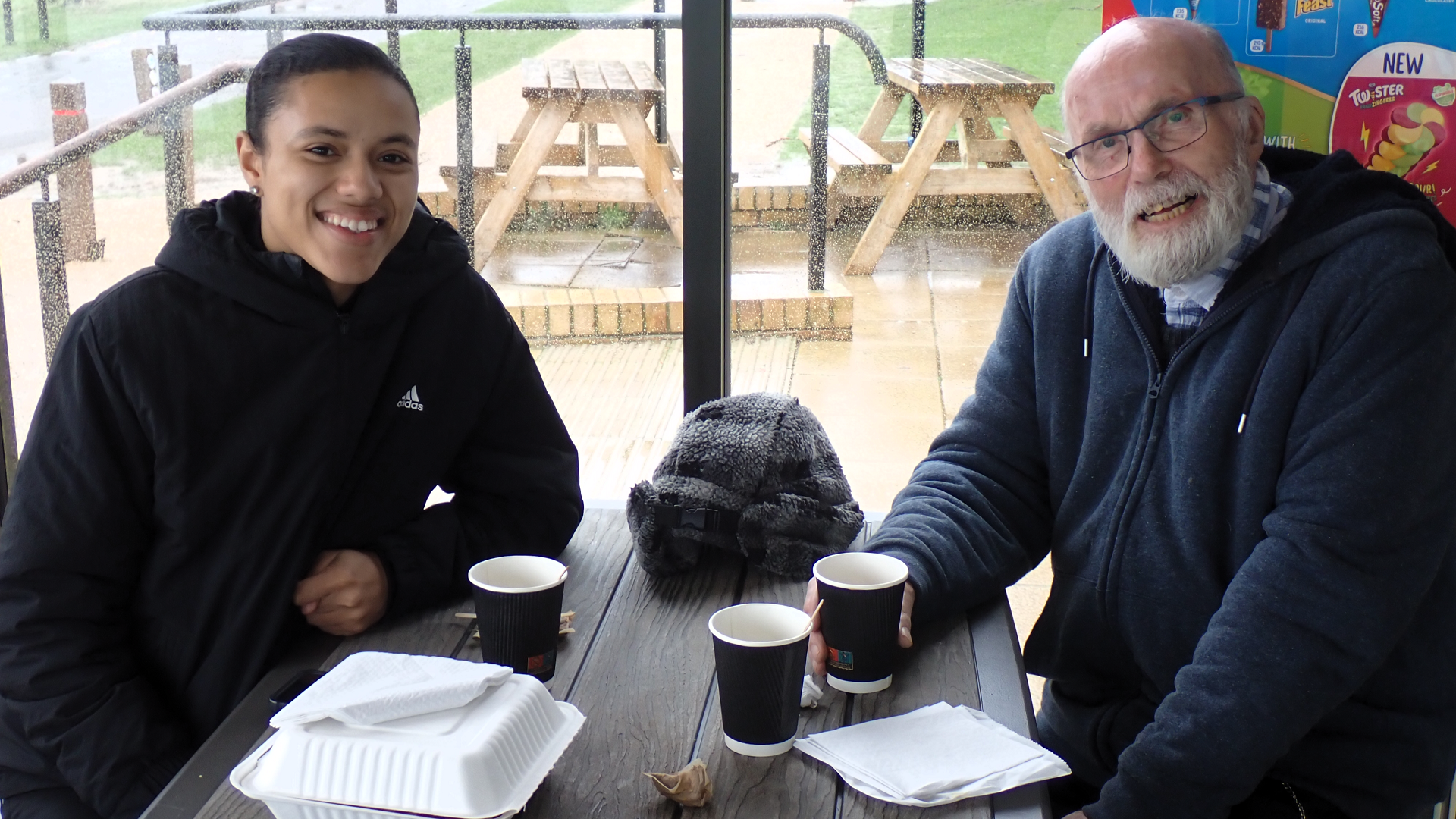

Winter Journal
2023/24
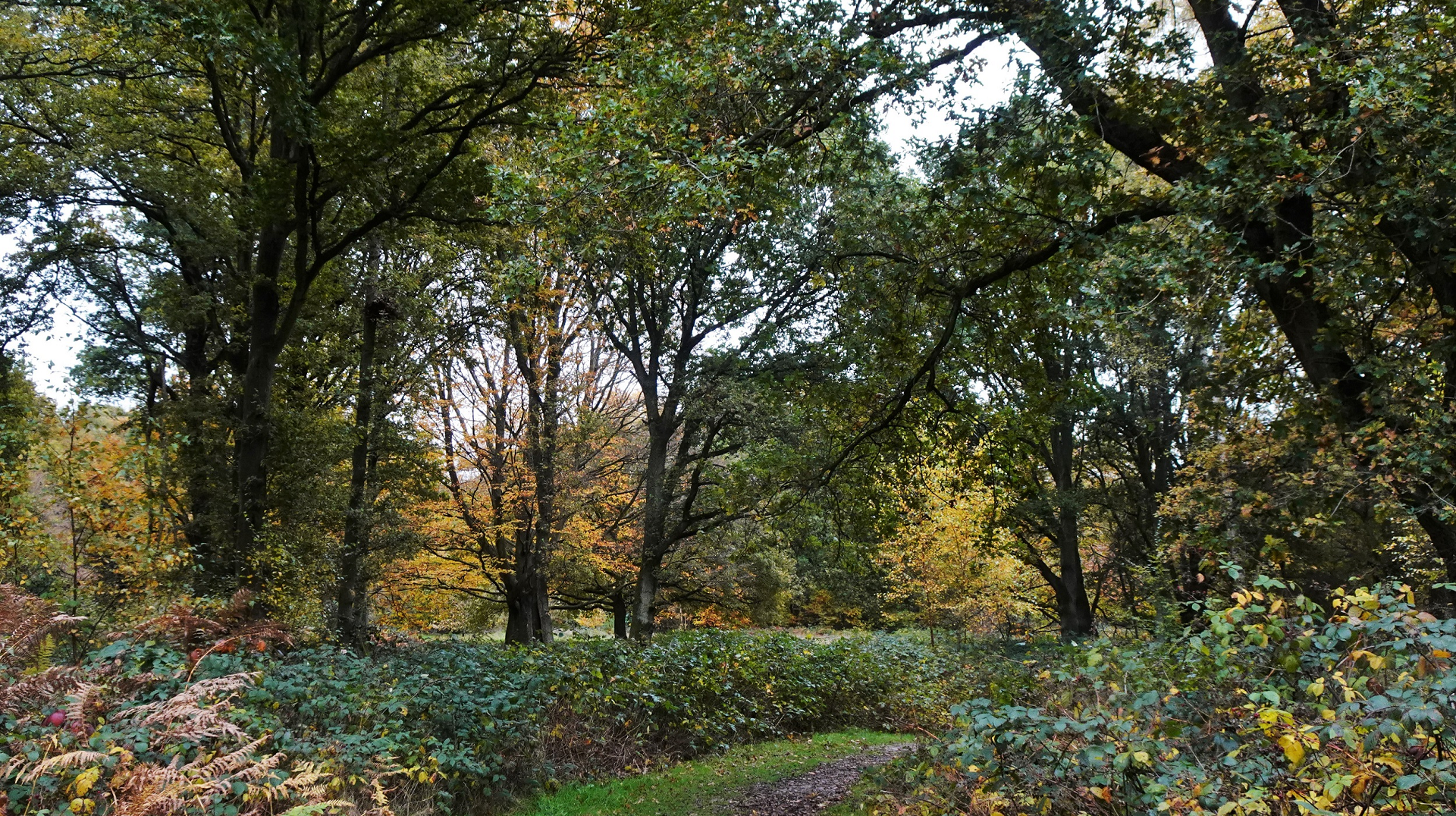
© Mike Rumble TQ4793 16/11/2023
Despite the old wives tale about lots of berries in autumn being a sign of a harsh winter Hainault forest remained fairly mild.
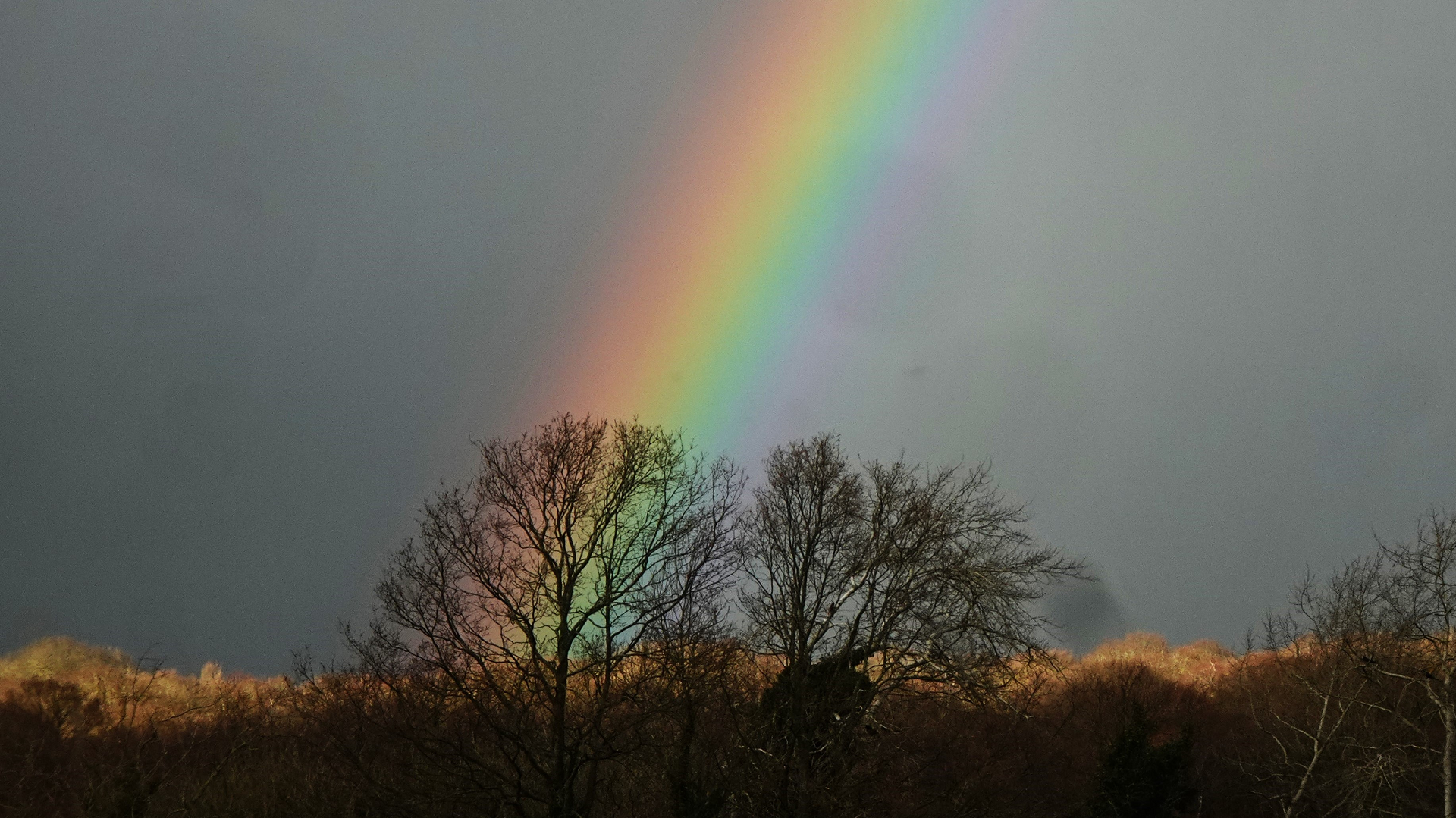
© Mike Rumble TQ4792 29/12/2023
Some beautiful rainbows occurred during December with one forming a perfect arch from Cabin Hill to Hog Hill.
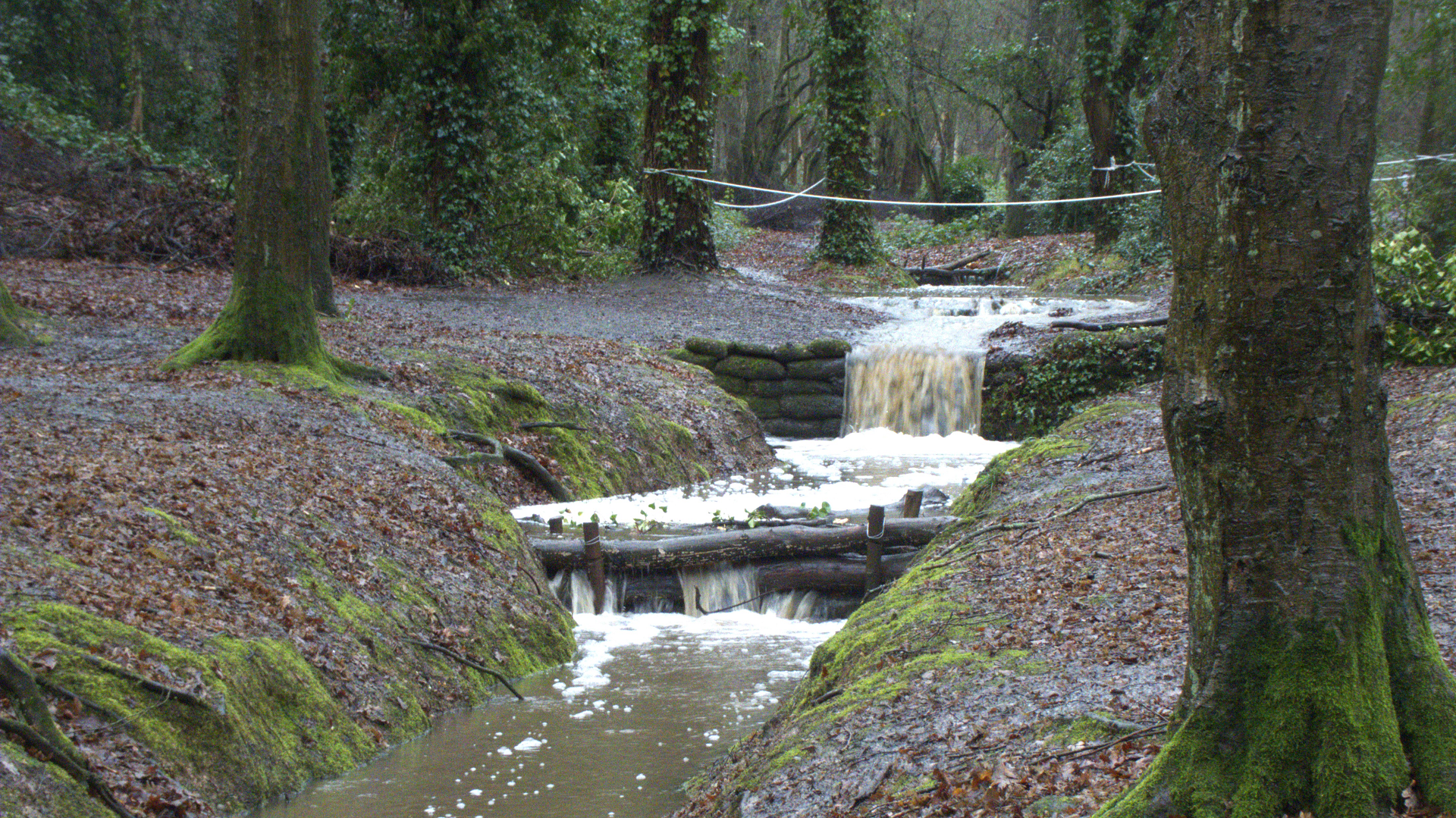
© Mike Rumble TQ4792 03/01/2024
Heavy rain fell in January testing the leaky dam system which held the water back well and prevented flooding on the lake path. Snow fell one morning but did not settle, however the days were cold enough to freeze the lake surface on several occasions. Winds picked up when storms Isha and Jocelyn swept across Britain and a few scattered trees blew down.
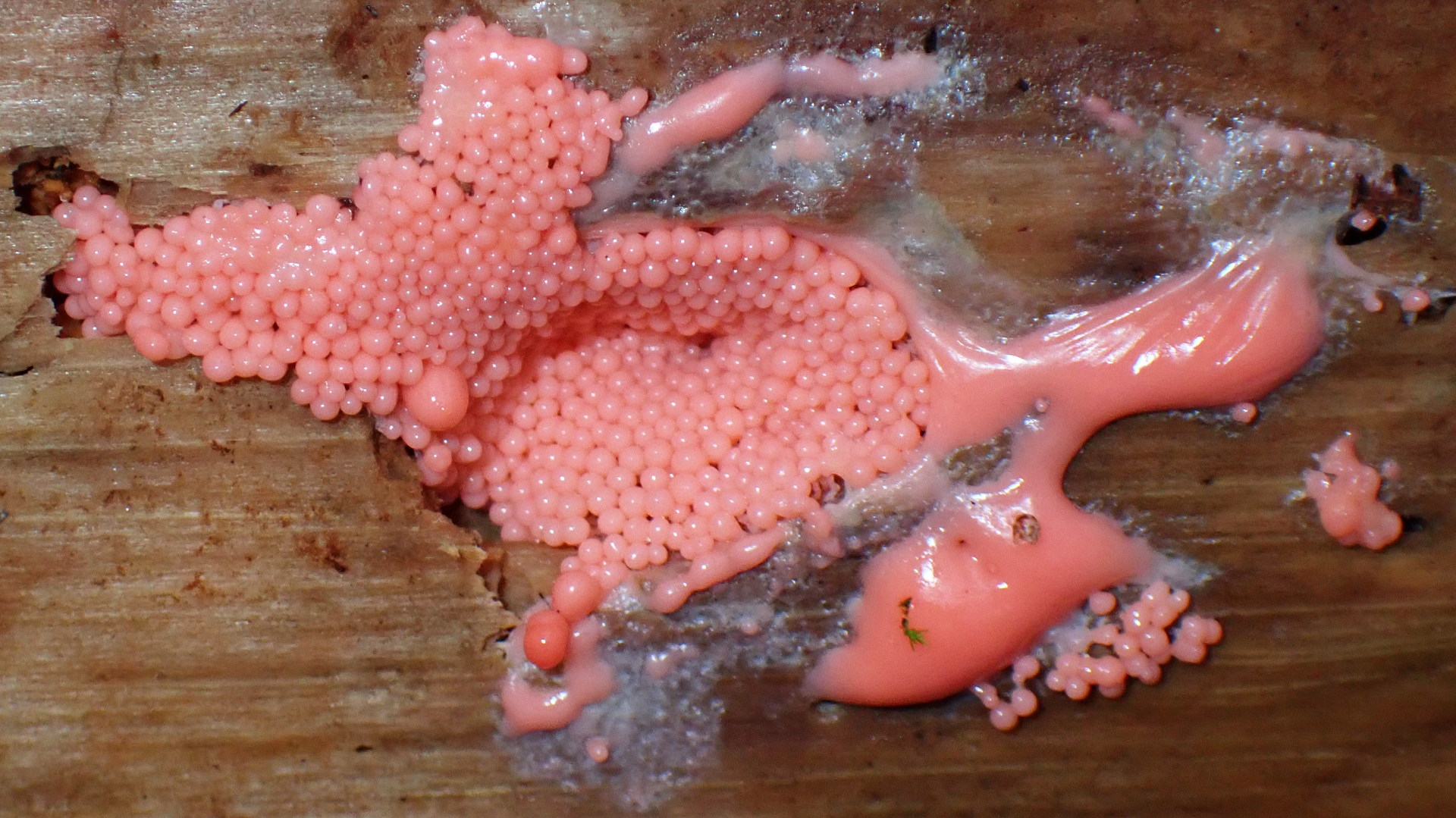
© Raymond Small TQ4792 11/01/2024
Slime Moulds tend to like damp weather. This is Arcyria ferruginea, its fruitbodies develop from a rose-red or creamy white plasmodium (slime). A simple explanation of a typical slime mould's lifecycle: single-celled organisms creep around in a slime to feed. When enough nutrients are consumed the organisms build elaborate structures that release spores giving rise to the next generation of single-celled organisms.
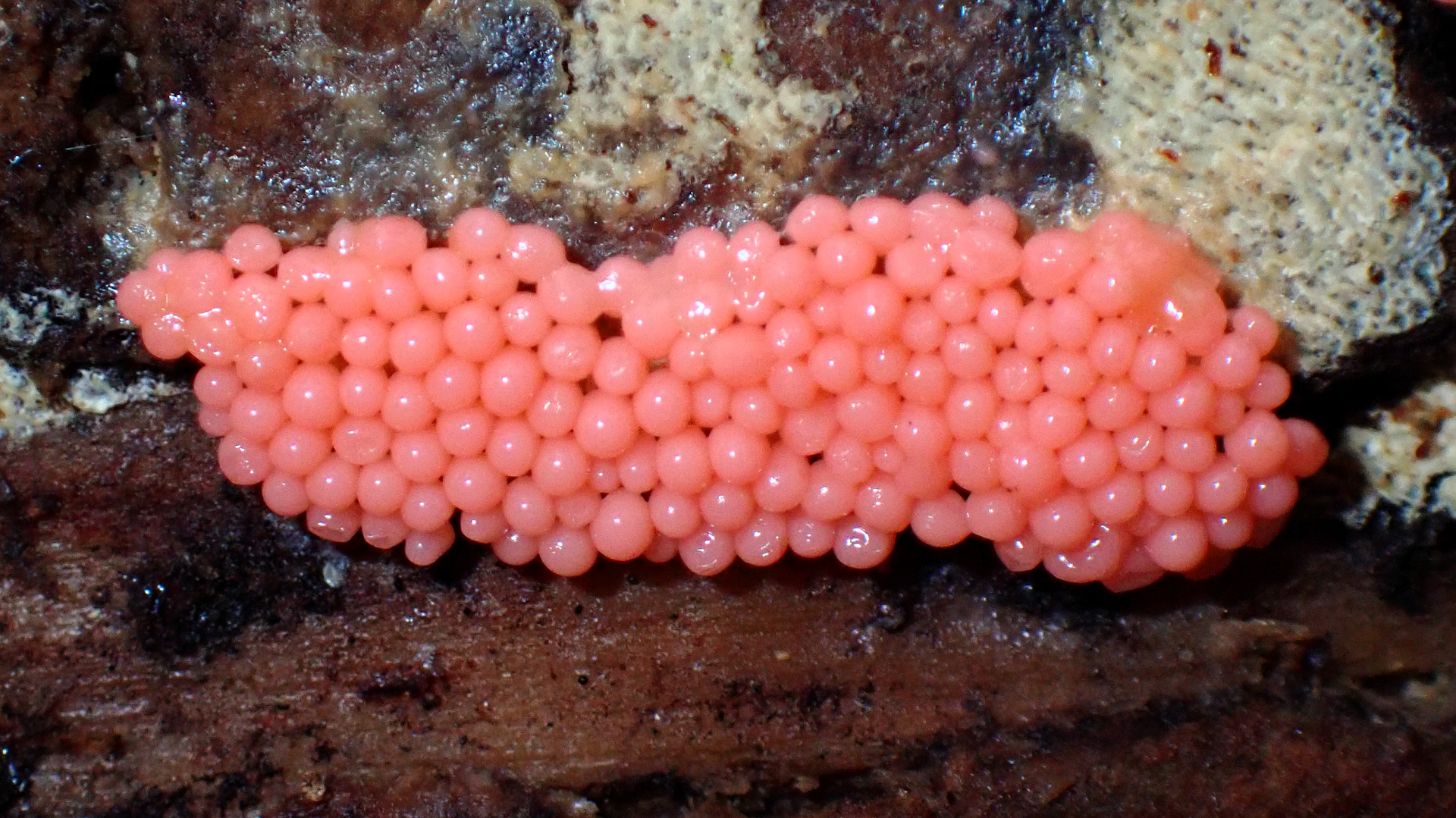
© Raymond Small TQ4792 11/01/2024
Arcyria ferruginea grows in crowded colonies 1-2 millimetres tall. The spore-producing structures are call 'Sporocarps'.
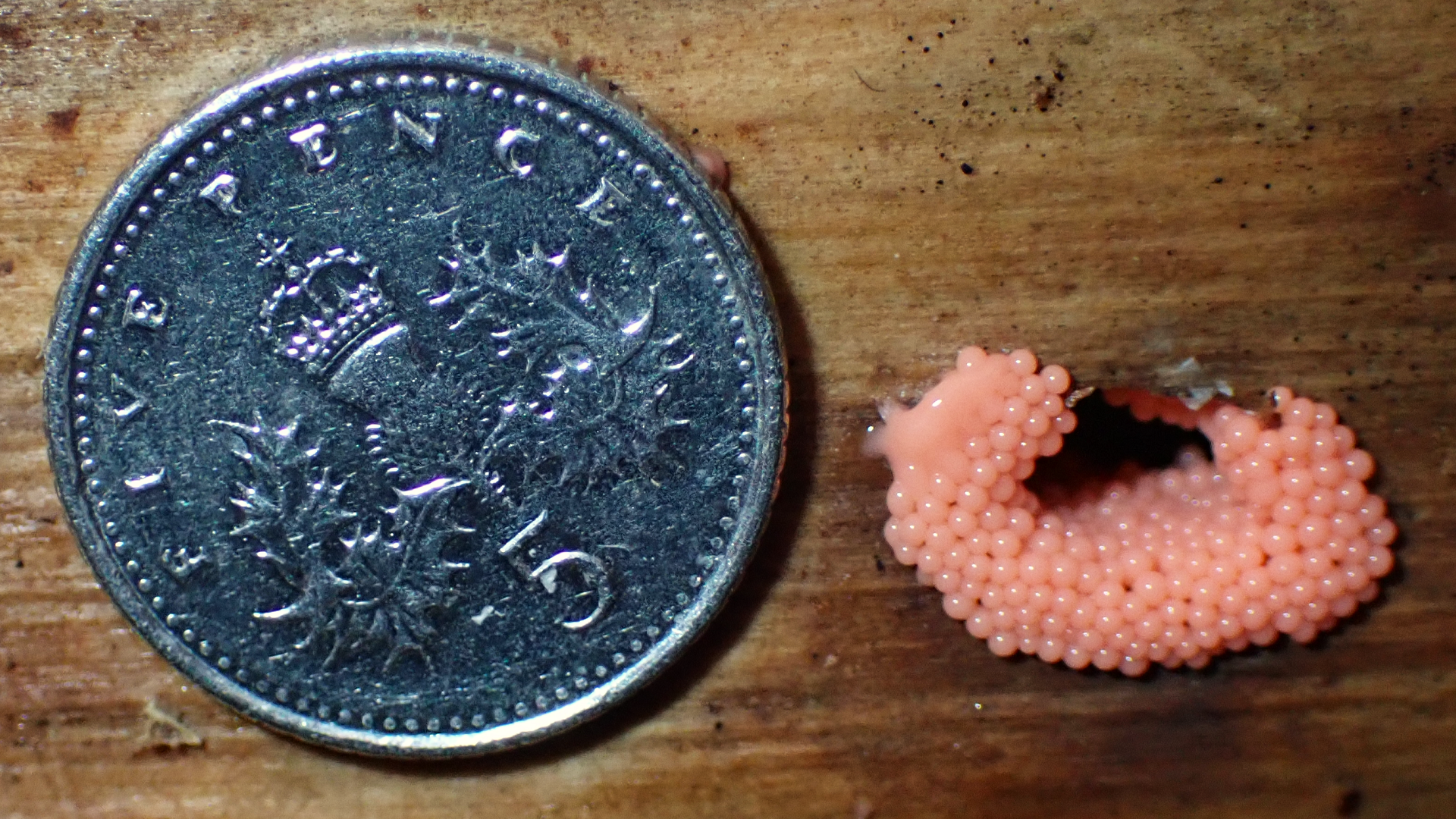
© Raymond Small TQ4792 04/02/2024
A 5p coin gives a sense of scale to this beauty which grows on rotten trunks and stumps, in this case a fallen decorticated Scots pine. Not all slime moulds are this small.
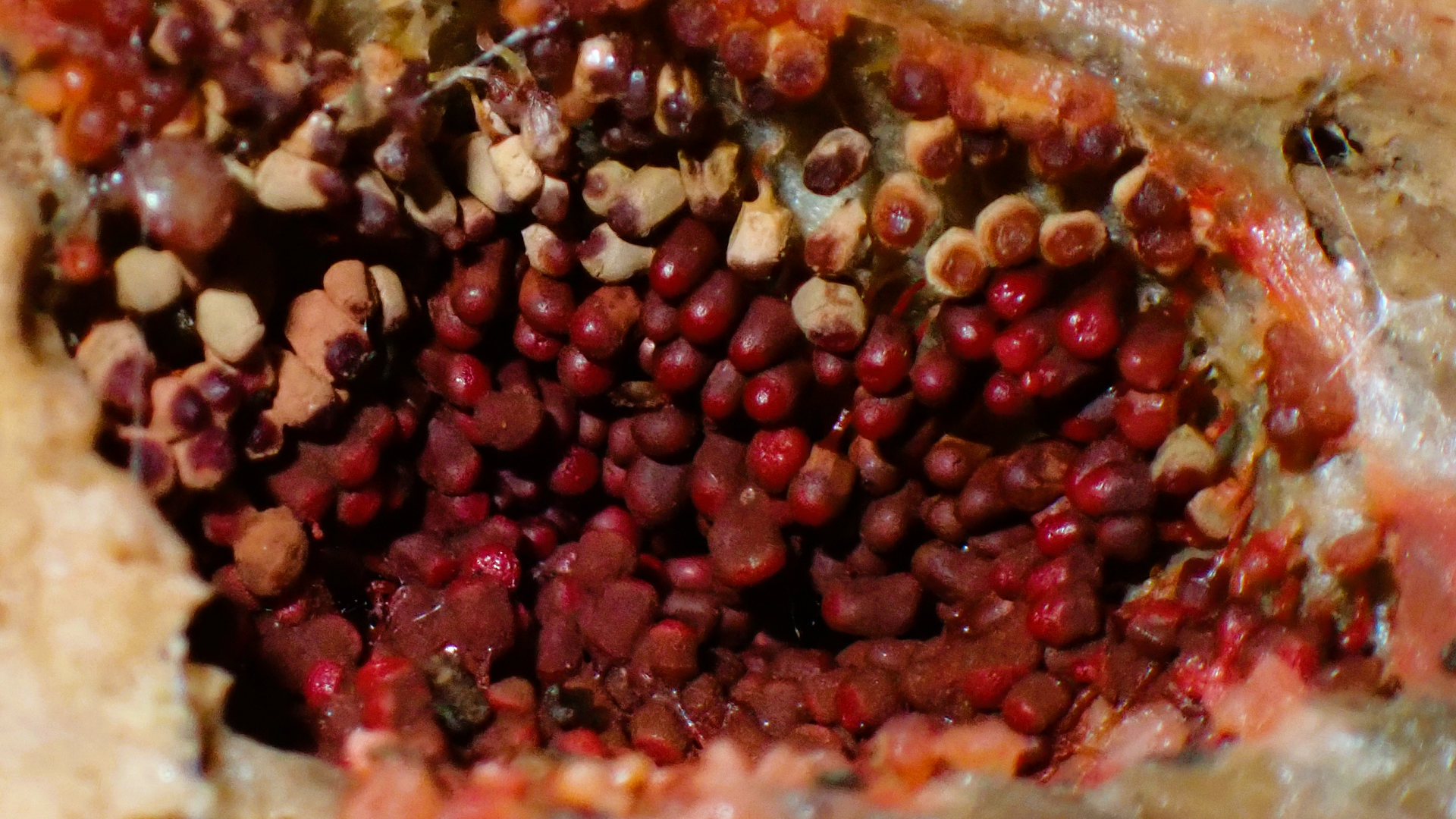
© Raymond Small TQ4792 27/01/2024
'Ferru' means iron and is a reference to rusty colouration seen in the latter stages of Arcyria ferruginea. The colour changes to brick red and brown prior to sporing. Thank you to Professor Bruce Ing for verifying this sighting with the following comment: "It is a winter species and often grows on pine so I am happy with the record. It is not common!"
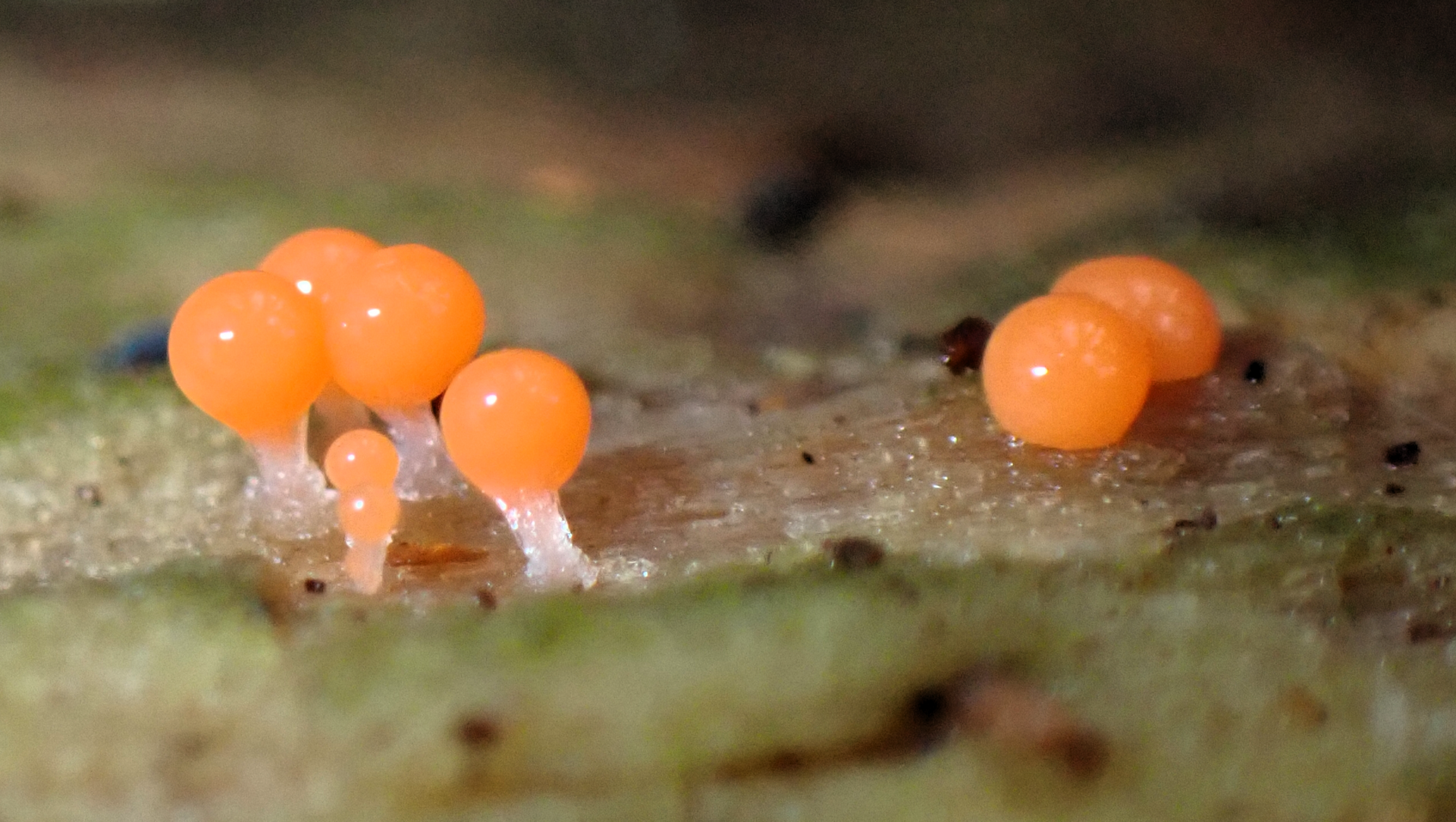
© Raymond Small TQ4792 19/02/2024
Trichia decipiens is a common slime mould found throughout the year on dead wood of coniferous and deciduous trees. This specimen was discovered on the underside of a rotten oak log. Many slime moulds go through dramatic colour changes as they mature. These bright orange fruiting bodies will turn olive brown.
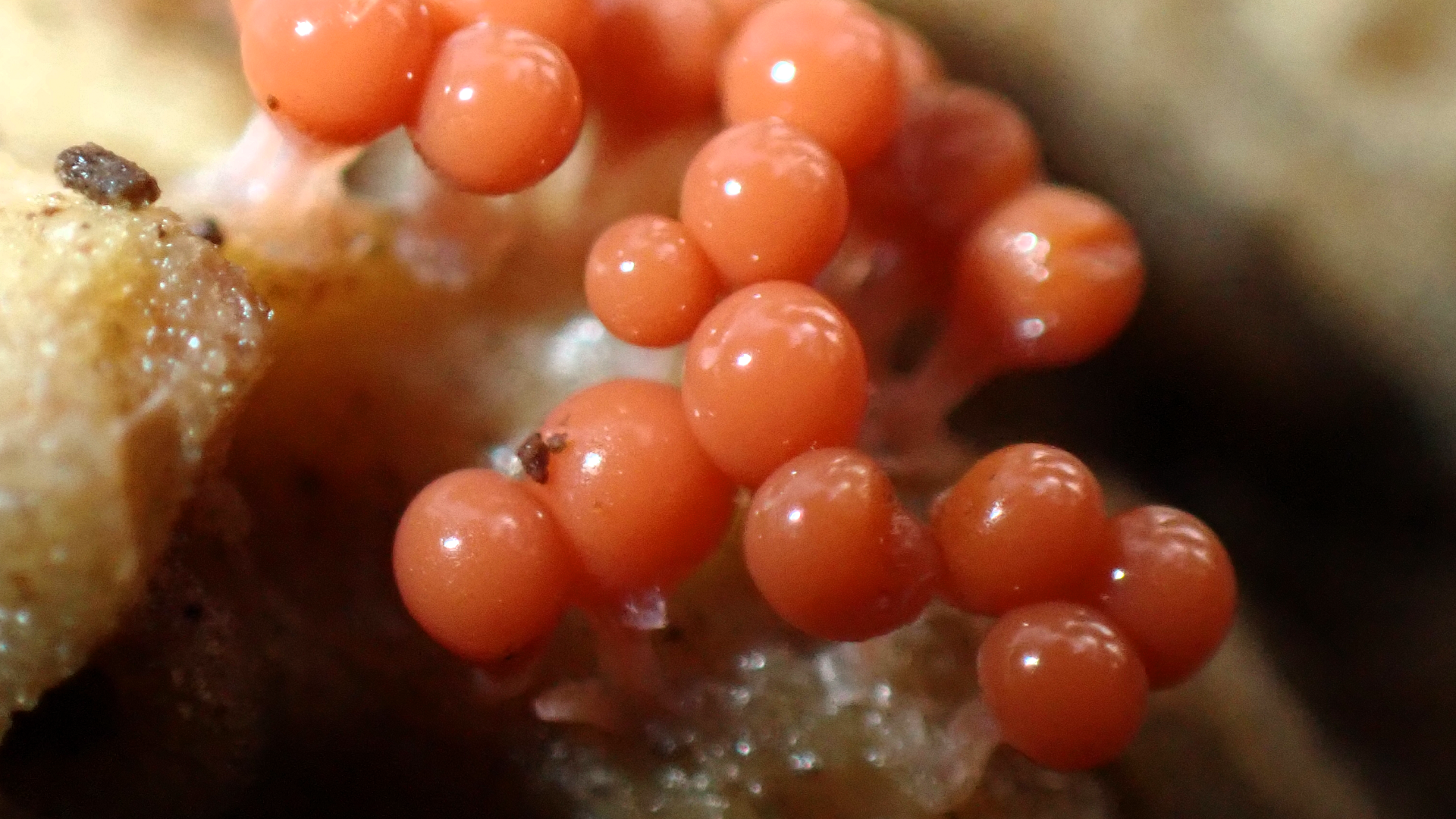
© Raymond Small TQ4792 19/02/2024
The pear-shaped sporangia of Trichia decipiens are normally petiolate and rarely sessile, up to 3mm tall and usually have a diameter of 0.6 to 0.8mm.
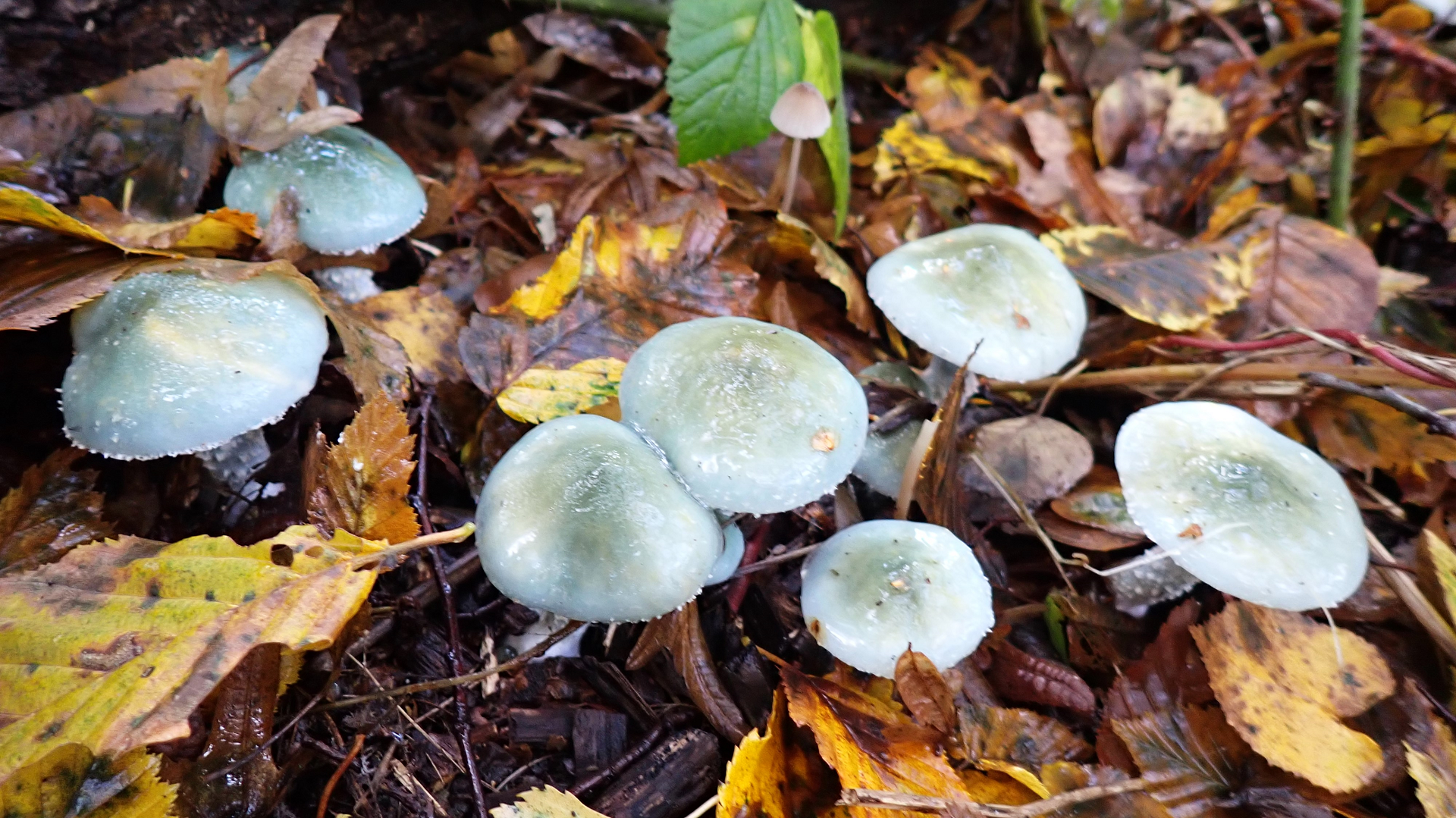
© Raymond Small TQ4793 10/11/2023
Blue Roundhead Stropharia caerulea is a saprobic fungus, normally seen in small groups in grass or leaf litter in woodland. It is sometimes mistaken for the Aniseed Funnel, however there are differences. It does not smell of aniseed; the caps are viscid, often more greenish than blue; and there are white scales near the cap rim. The caps begin bell-shaped, then flatten and turn paler from the centre. When mature the cap diameter is typically 3-8cm. Gills are light grey becoming purple-brown as spores develop. The gills are notched near the stem.
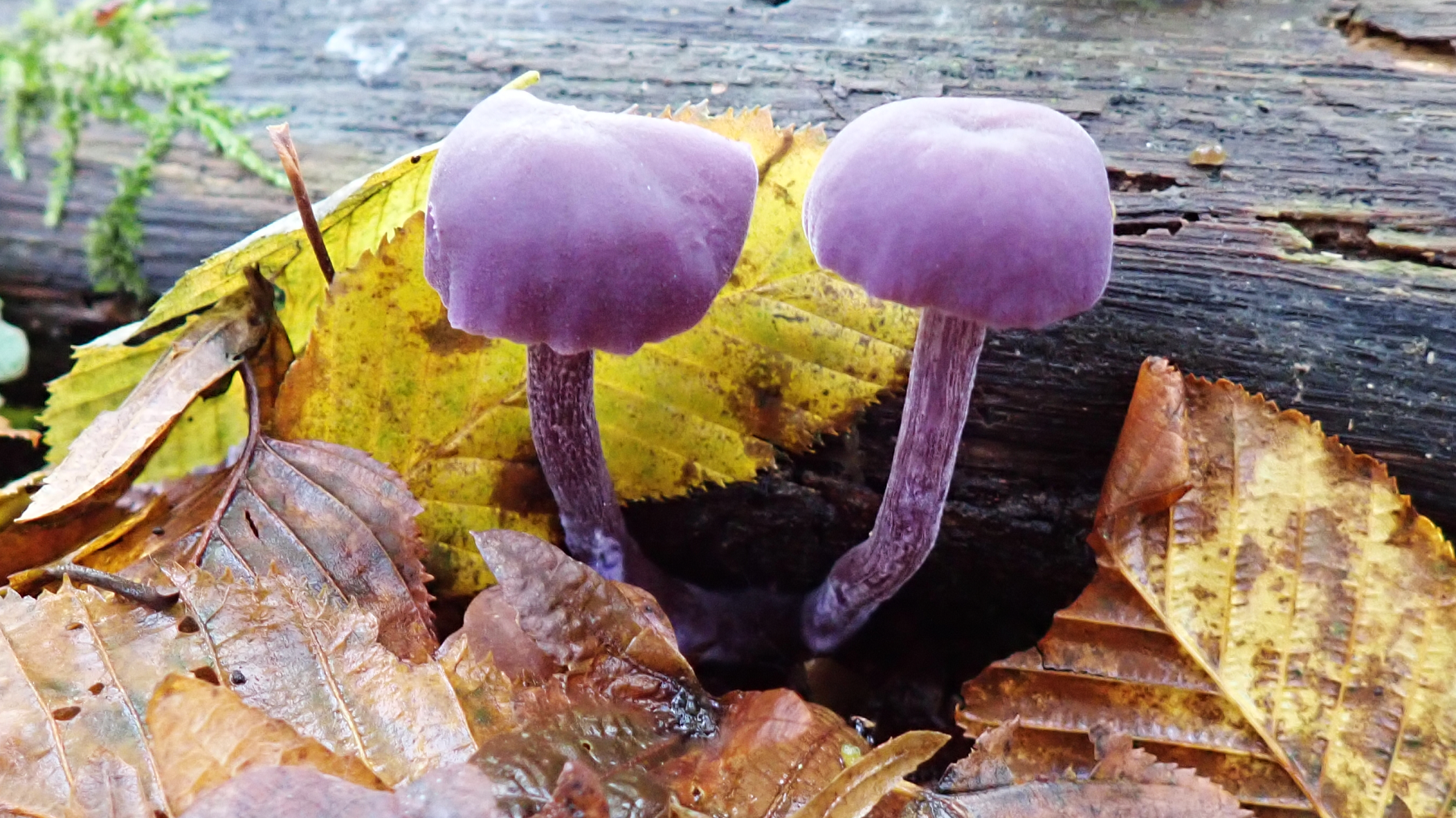
© Raymond Small TQ4792 09/11/2023
Amethyst Deceivers Laccaria amethystina appear in mixed woodland during late and early winter, especially near beech. Whether the mushrooms are dark or pale depends on the weather and age. Deep purple indicates there has been a spell of damp weather. They tend to be paler in dry conditions.
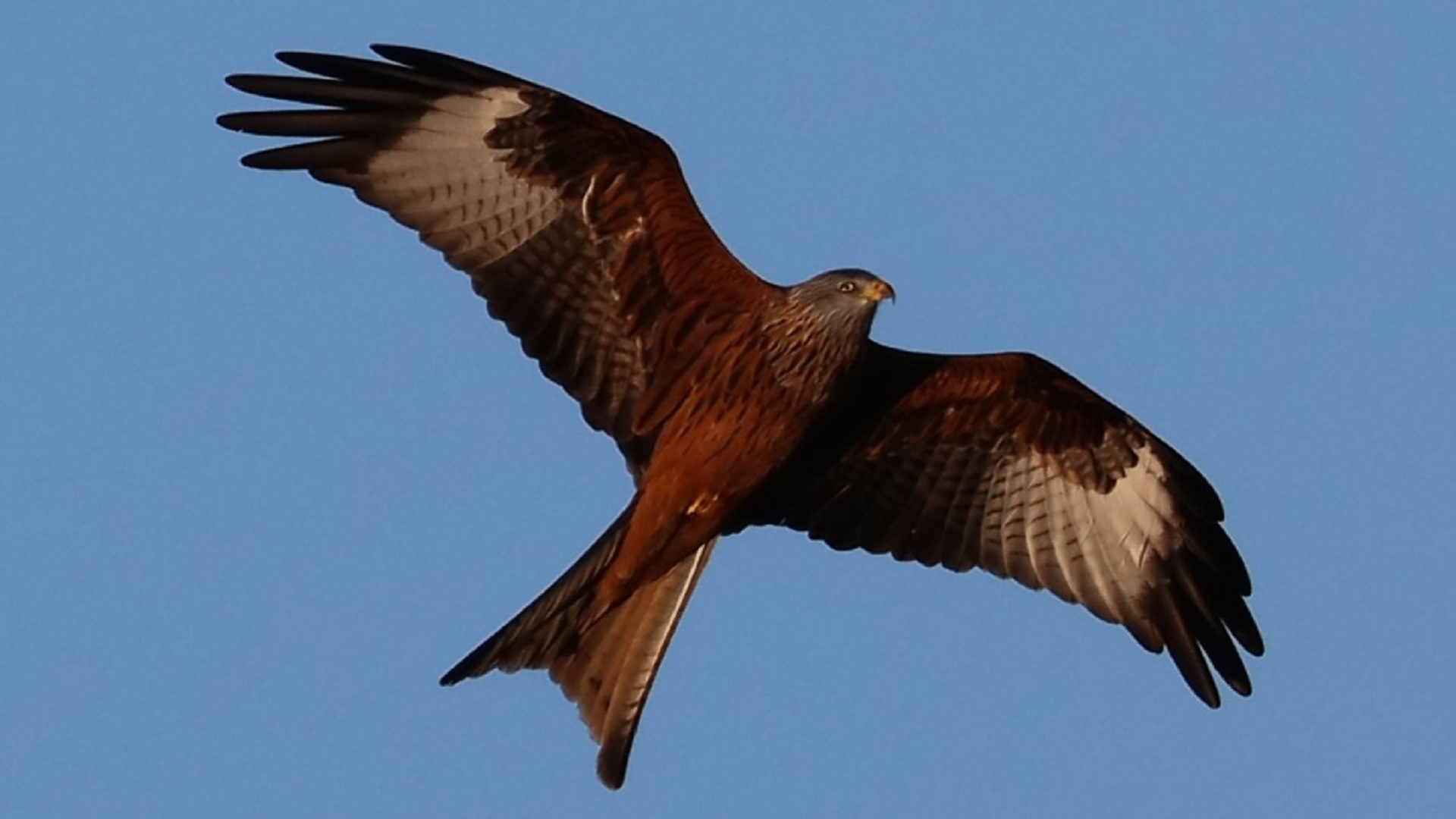
© Michael Trump TQ4792 08/01/2024
Red Kites were nearly on the brink of extinction in Britain, but have now been successfully re-introduced into the wild. Regular flyers over Hainault Forest, a source believes a pair is nesting locally. They feed mostly on carrion and worms, but will sometimes take small mammals. They can be easily be distinguished from Buzzards by the forked tail.
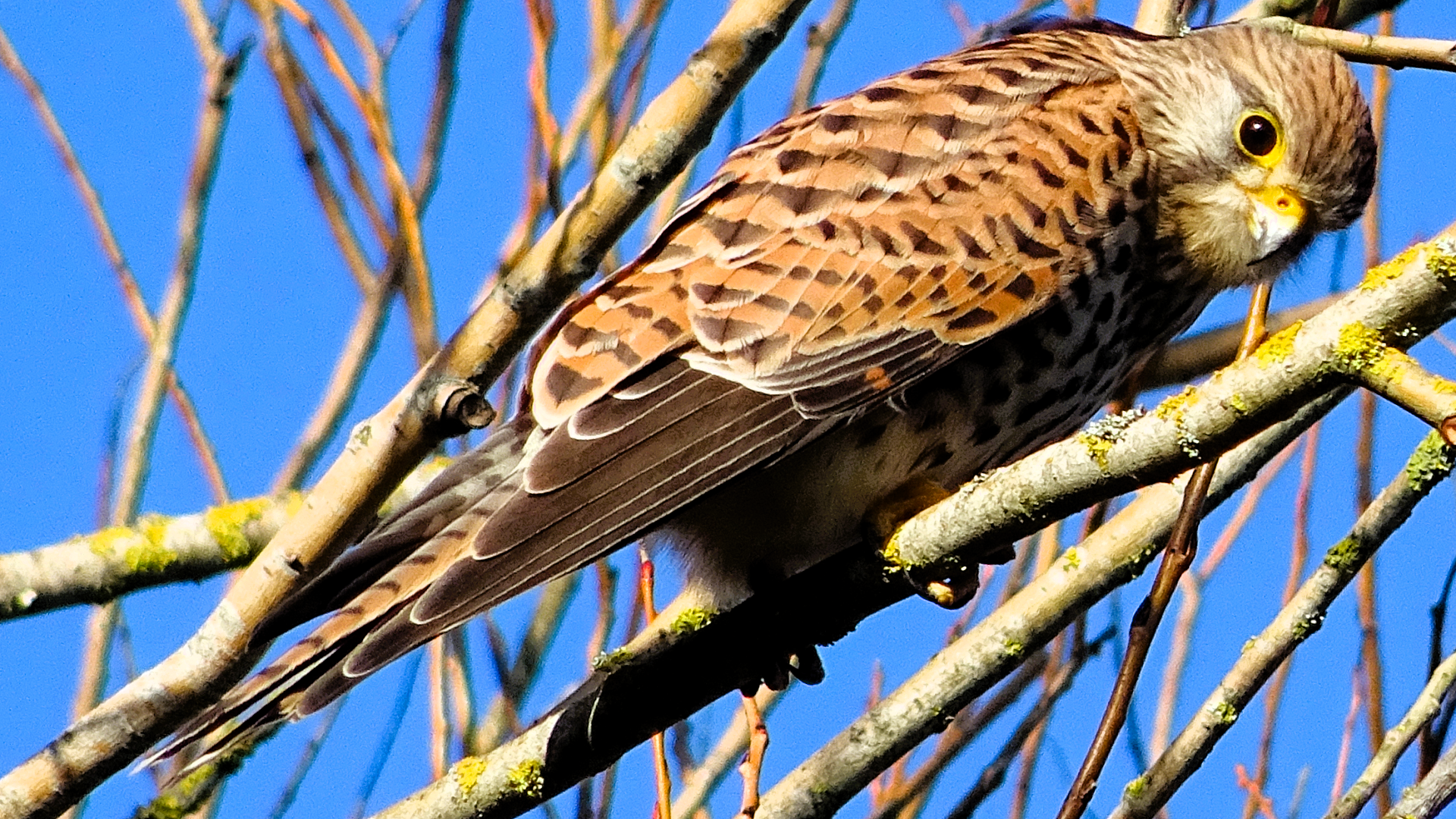
© Raymond Small TQ4792 26/01/2024
Kestrels feed on small mammals, birds, worms and insects. They are often seen hovering over the meadows looking for voles and mice. Their superb eyesight can spot insects from a distance equivalent to roughly the width of a football pitch. Ultraviolet vision allows them to spot urine trails left by rodents making prey easier to locate. Kestrels must eat 4-8 voles a day.
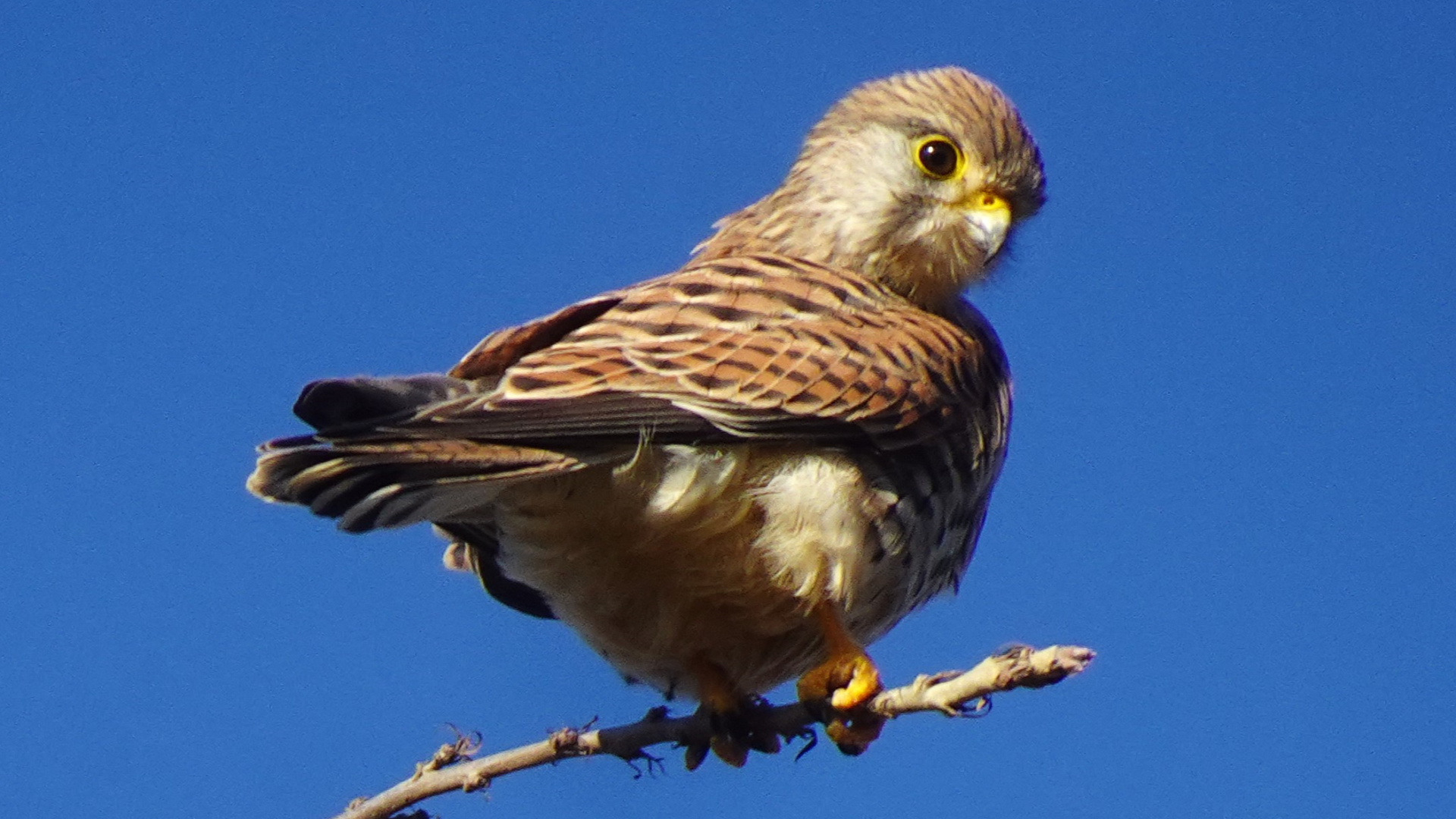
© Mike Rumble TQ4792 26/01/2024
Female Kestrels have brown head feathers and have black bars across the tail. Males have blue-grey heads and an all grey tail with a black band at its base. Both sexes have yellow feet, yellow around the eyes and yellow skin above their beaks.
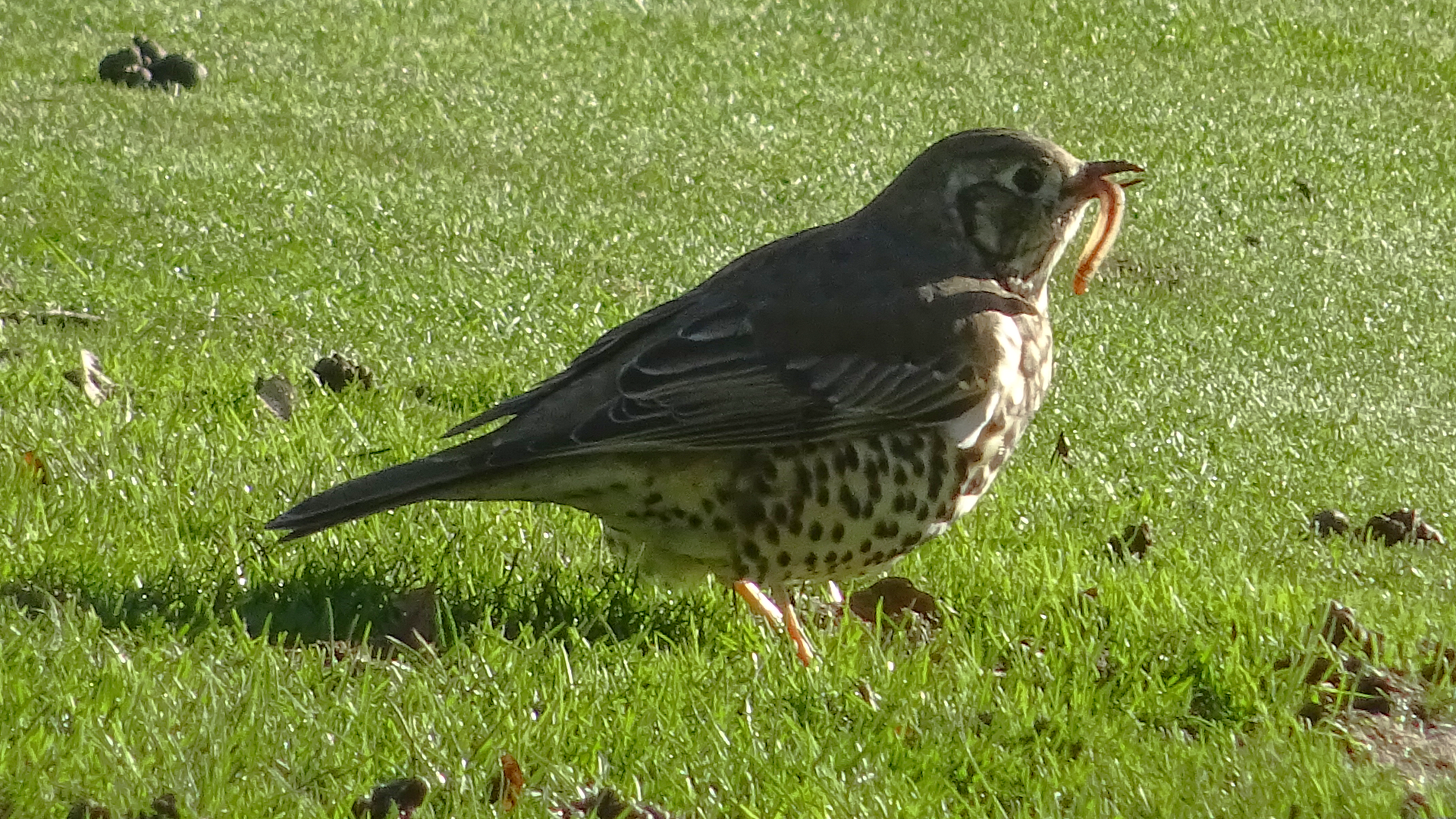
© Raymond Small TQ4792 15/01/2024
The Mistle Thrush is so-called because it is one of the few birds to feed on mistletoe berries. Although mostly vegetarian it is sometimes seen hopping on the ground searching for worms and insects. This is the largest British Thrush and white tips to the outer tail feathers helps distinguish it from the others. They are sometimes referred to as 'Storm Cocks' because they continue singing through storms.
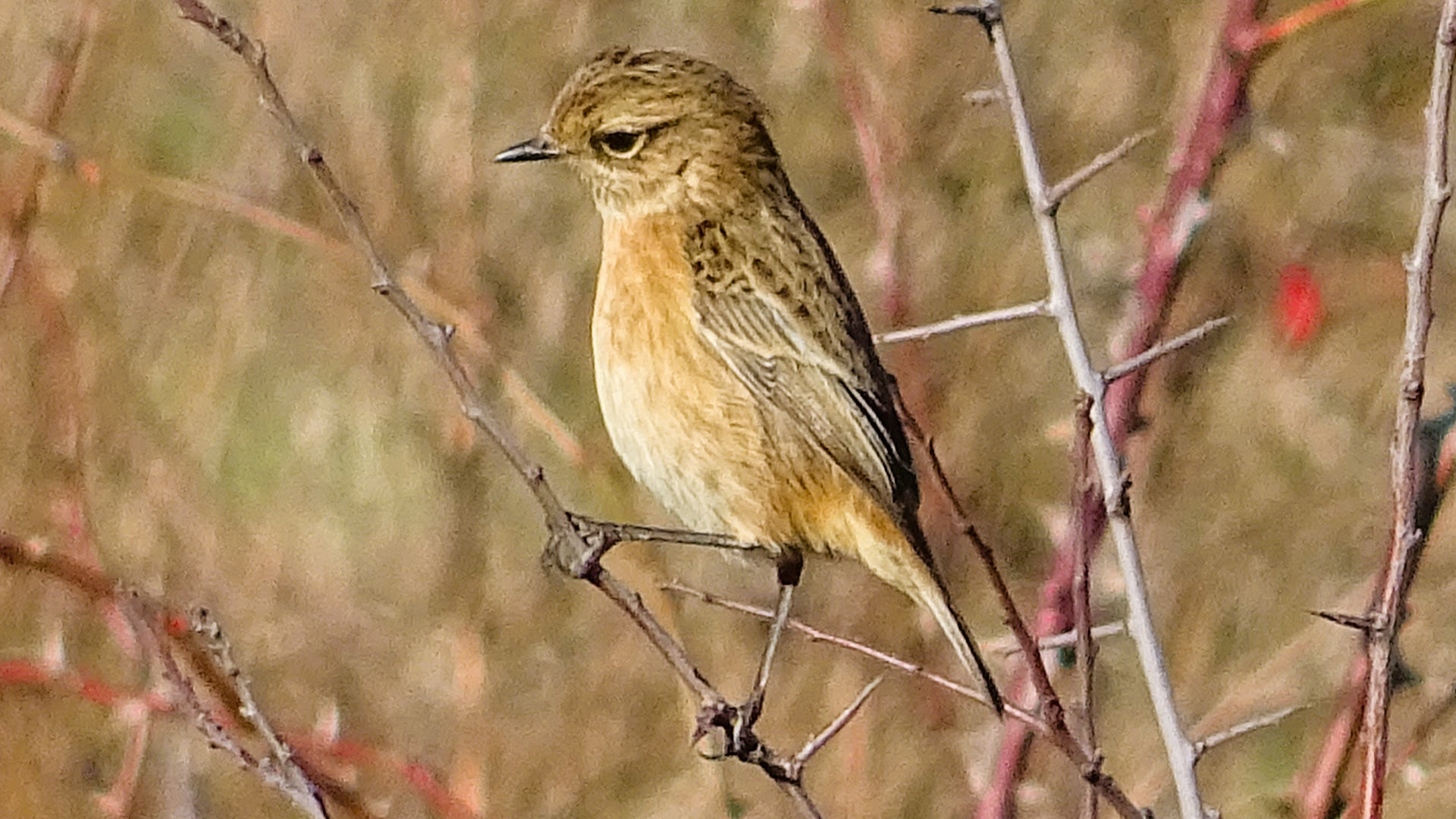
© Raymond Small TQ4792 19/01/2024
Stonechats are becoming more noticeable in the recently installed scrub area of Lower Cabin Hill. The male has a black head, brown back, black throat, a white half-collar and an orange-red breast. Females and juveniles are paler.
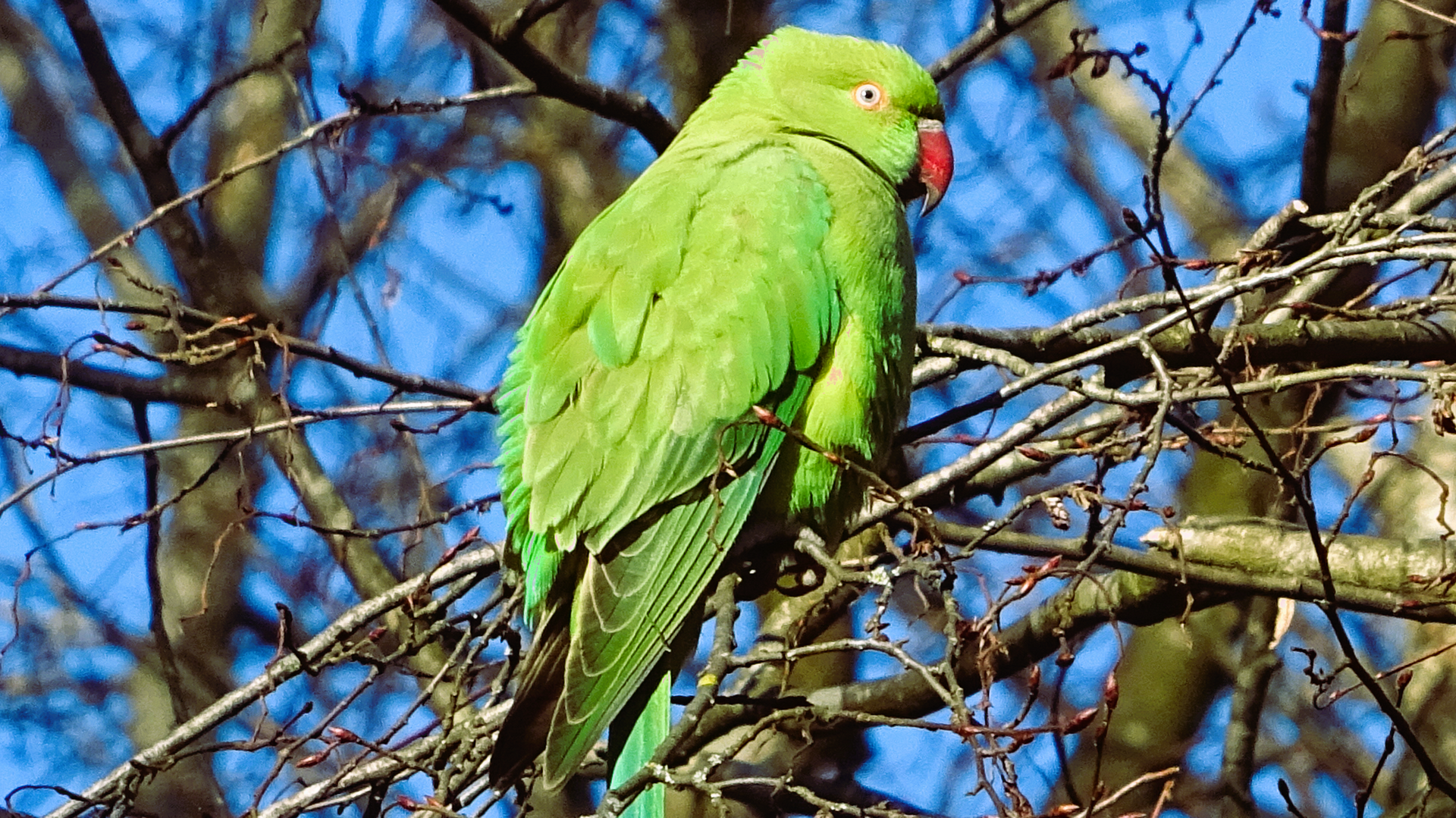
© Raymond Small TQ4793 19/01/2024
It is now difficult to visit Hainault Forest without seeing or hearing a Ring-necked Parakeet, Britain's only naturalised parrot. They are especially common in the Roe's Well area of the forest.

© Raymond Small TQ4792 20/01/2024
Greenfinches, Chaffinches and Hawfinches are rarely seen in Hainault Forest, however the Goldfinch is a different story and numbers have increased a lot over recent years.

© Raymond Small TQ4792 18/01/2024
This Crow is waiting to be thrown a peanut. Crows love unsalted red peanuts!

© Mike Rumble TQ4792 12/02/2024
The Nuthatch is a resident woodland species that rarely travels far from its hatching site. They feed on nuts, acorns, seed and insects.
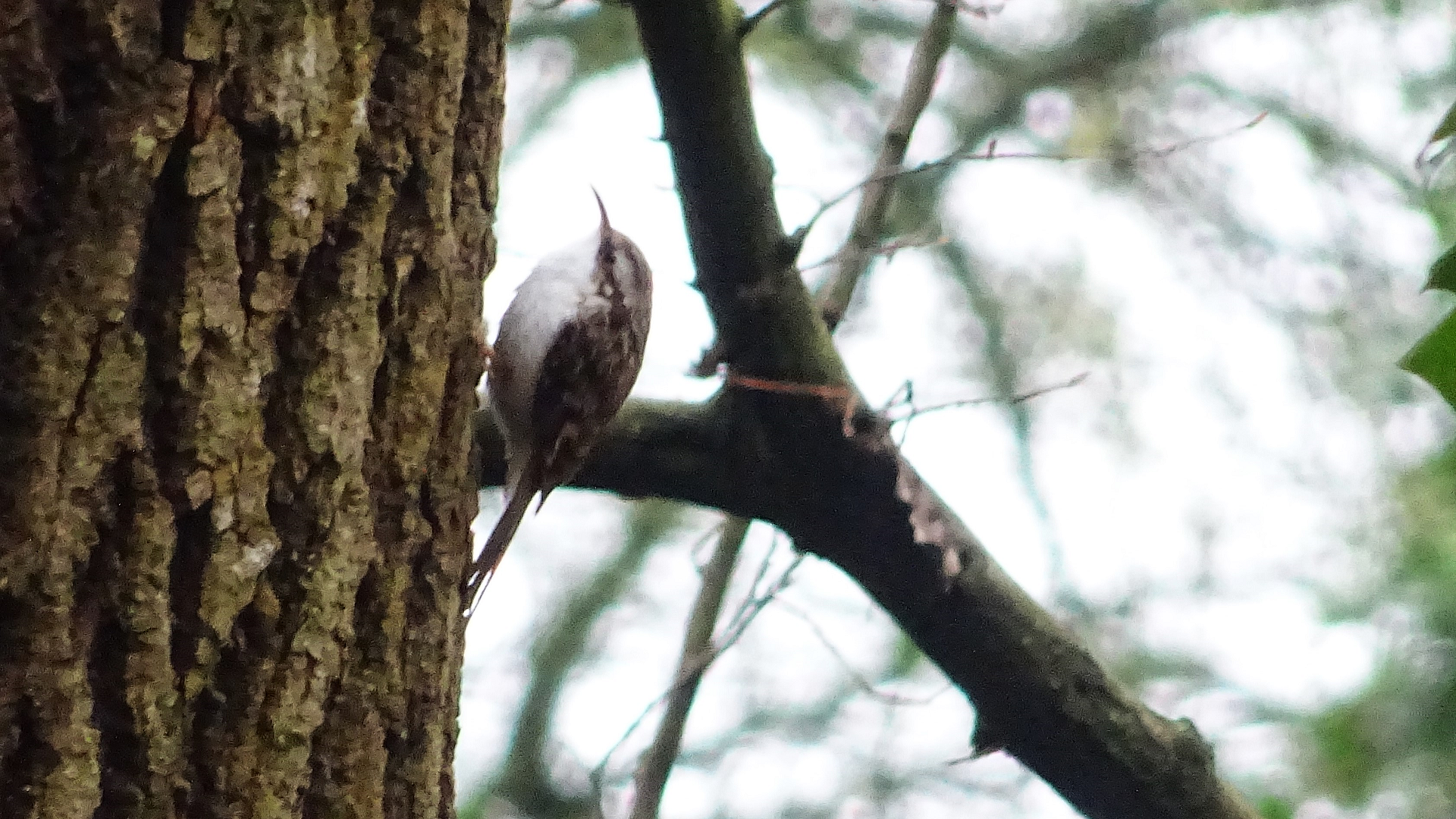
© Raymond Small TQ4793 08/02/2024
Treecreepers are fairly common in Hainault Forest but can be difficult to spot. These tiny birds are usually seen climbing tree trunks as they search for insects to pluck from underneath bark with their curved bills.
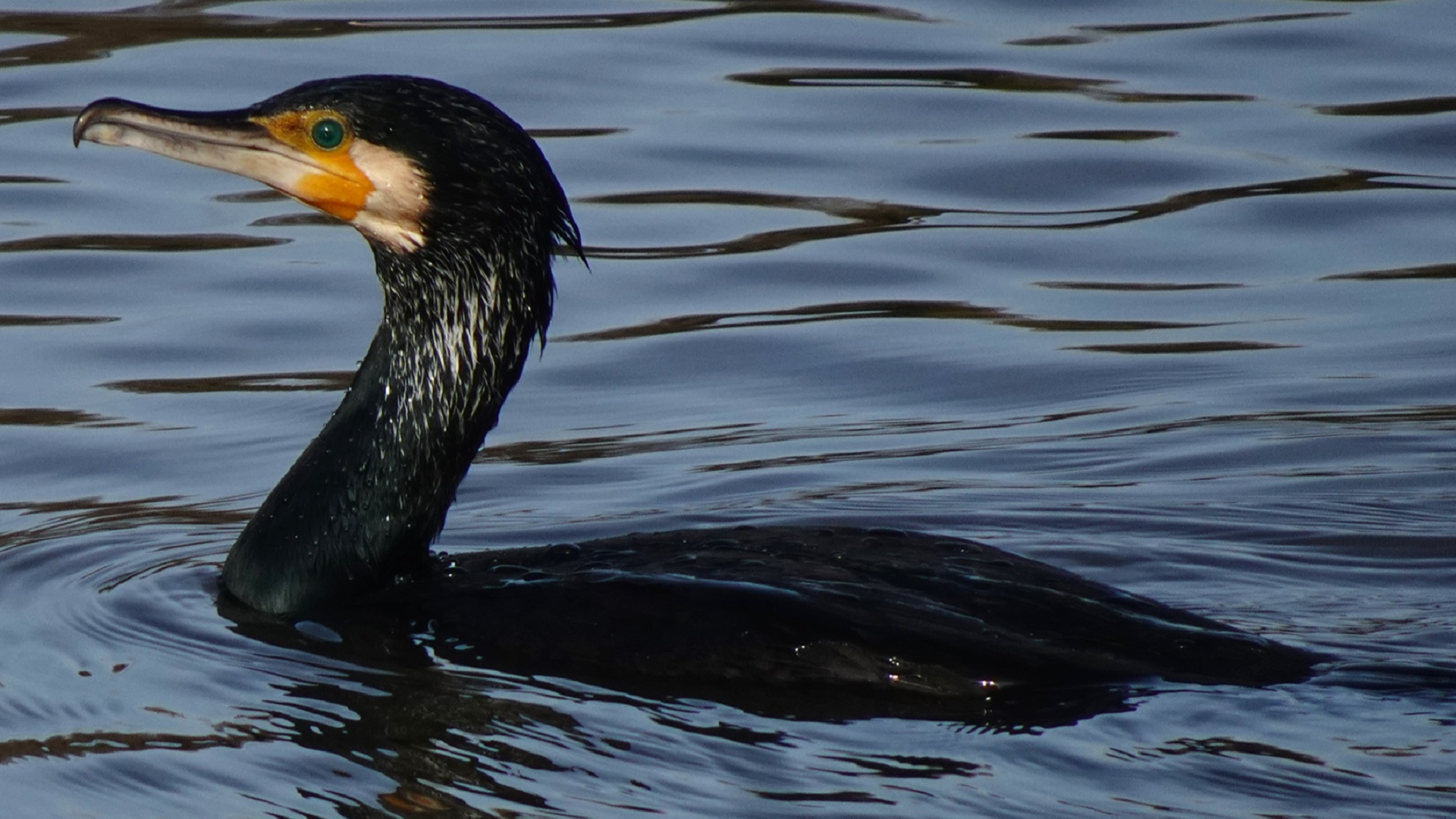
© Mike Rumble TQ4792 27/01/2024
Cormorants can be seen on Hainault Lake at any time of year, but are more common in the winter months.
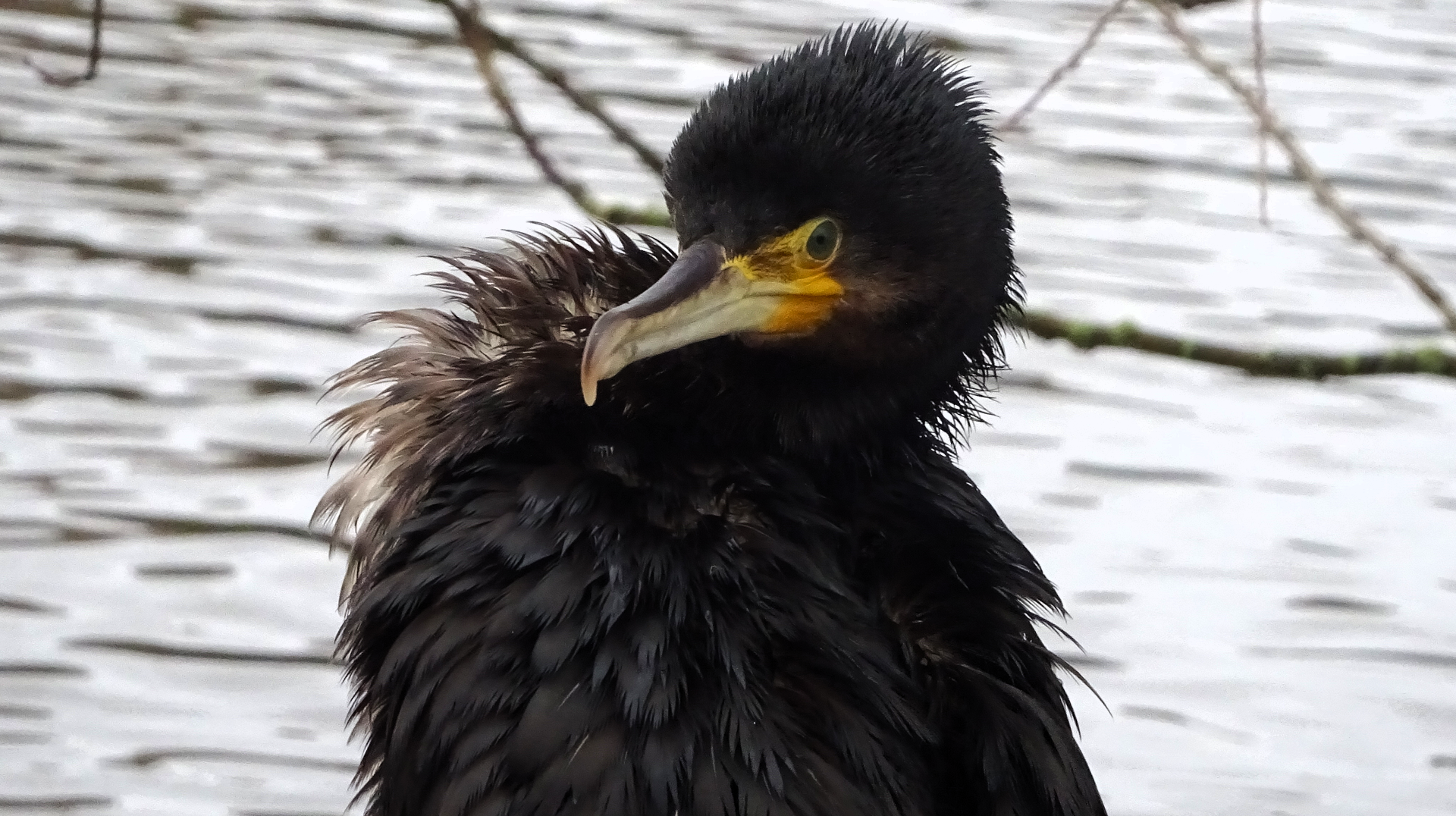
© Raymond Small TQ4792 05/12/2023
This young Cormorant allowed me to get very close which made thoughts turn to whether one could be tamed? Evidently, they can! Chinese fisherman have been using tame cormorants to catch fish for many centuries. A collar is attached around the bird's neck allowing it to swallow small fish, but not large ones. The fisherman retrieves the larger fish from the bird's throat and keeps them for himself. Cormorants may be despised by some British anglers, but in other parts of the world they are the fisherman's friend.
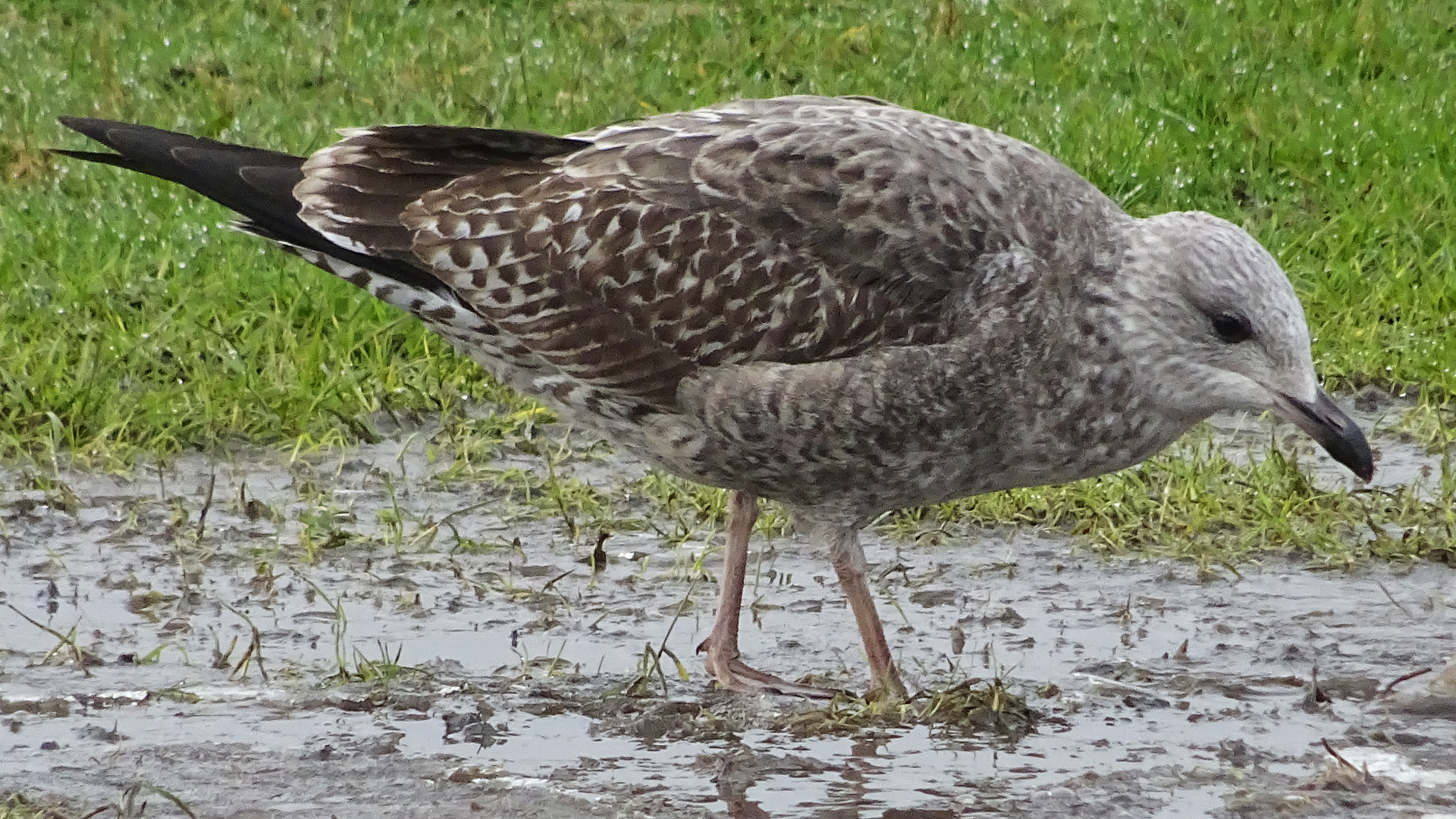
© Raymond Small TQ4792 27/01/2024
In their first winter, Lesser Black-backed Gulls are pale-headed, the body is distinctly patterned and the bill is black.
© Michael Trump TQ4792 12/12/2023
The Great Crested Grebe is the largest and most common of the British Grebes. Only one has been spotted on Hainault Lake recently perhaps searching for a mate. Pairs normally start courtship in mid-winter. Flamboyant rituals and gesturing occur including head shaking, dancing with water-plants in their bills and offering fish. If a couple accept each other then a nest will be built over the water. The young are fed feathers by the parents. The reason for this is unclear, but it has been suggested that this is done to assist them in regurgitating fish bones and to make them less susceptible to gastric parasites.
© Raymond Small TQ4692 28/01/2024
Spring Usher
Agriopis leucophaearia is a
very variable species from nearly black-and-white to a drab grey. This is a male; females are wingless. This winter species inhabits mature oak woodland and areas with scrub oak. Pedunculate Oak and Sessile Oak are the larval foodplants.
© Raymond Small TQ4692 28/01/2024
Many common names of Micro Moths have recently changed. In some cases this was done to give a better description and at other times to be more politically correct.
Agonopterix alstromeriana was previously known as the Brown-spot Flat-body, but its new name is Hemlock Moth. As the new name implies it is usually found around hemlock which is the larval foodplant.
© Mike Rumble TQ4793 16/11/2023
This moth is the Feathered Thorn
Colotois pennaria. Its common name is derived from the feathery antennae of the male. The species flies late in the year and is found in woodland, parks and gardens. This is a rather pale specimen, they are generally more reddish-brown.

© Raymond Small TQ4792 16/01/2024
A batch of Vapourer Moth eggs on the trunk of an Oak tree. Strands of silk belonging to the female's cocoon from last year can be seen underneath. The female is flightless.
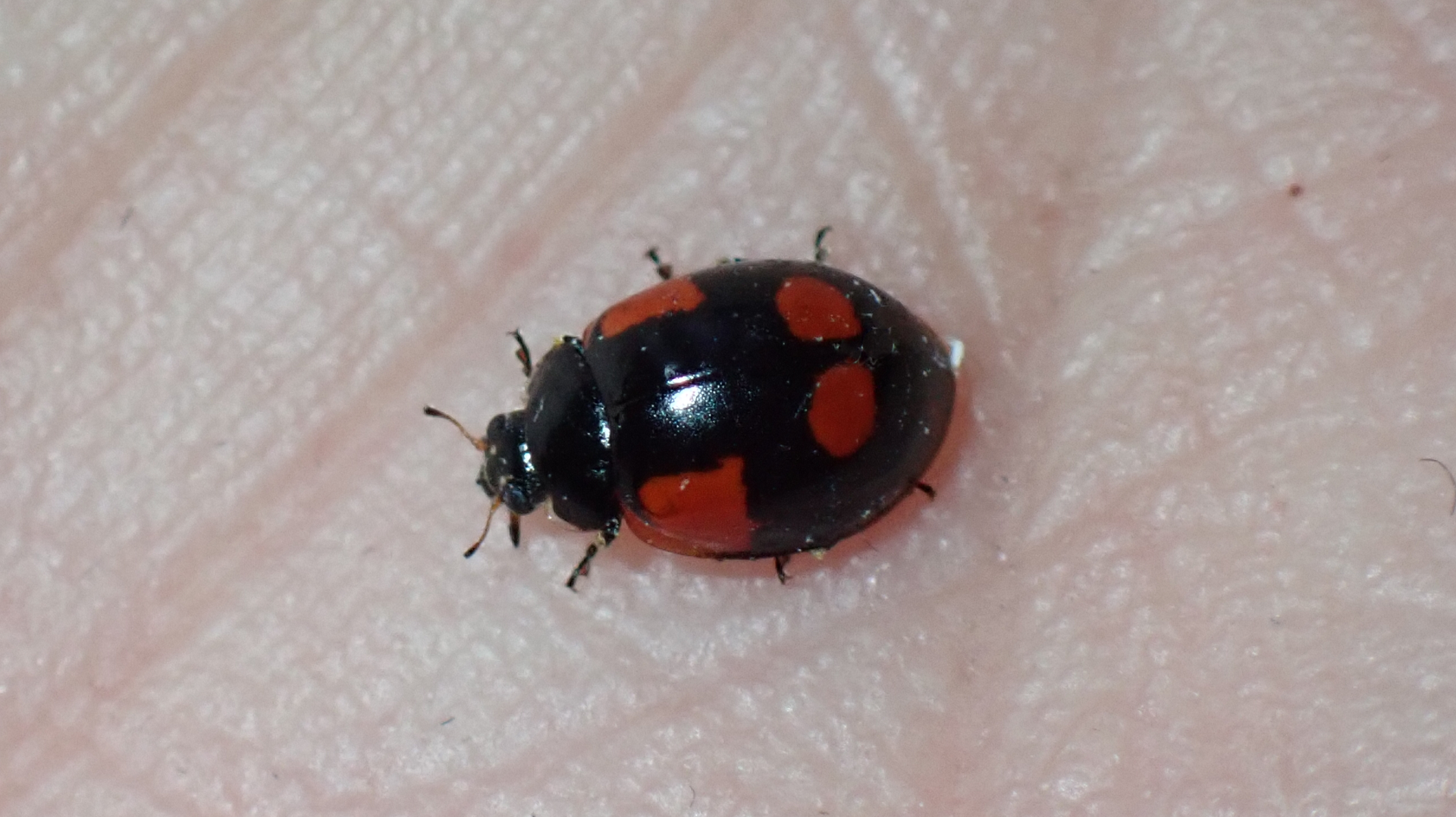
© Raymond Small TQ4792 29/01/2024
Two-spot Ladybirds Adalia bipunctata are voracious hunters found in a range of habitats where aphids on which they feed exist. These small ladybirds can be either red with black spots or black with red spots - sometimes with multiple spots. They hibernate during winter and usually become active during late February or March. This picture shows form quadrimaculata.
© Raymond Small TQ4793 24/12/2023
Pill Millipedes
Glomeris marginata are mainly active at night when they feed on dead organic debris. During the day they often hide under logs and stones. This species is normally shiny black with each tergite having a pale margin. When sensing danger they curl up, but do not form a complete ball. Each segment has two pairs of legs per segment. Females are 8-20mm long and males 7-15mm long.
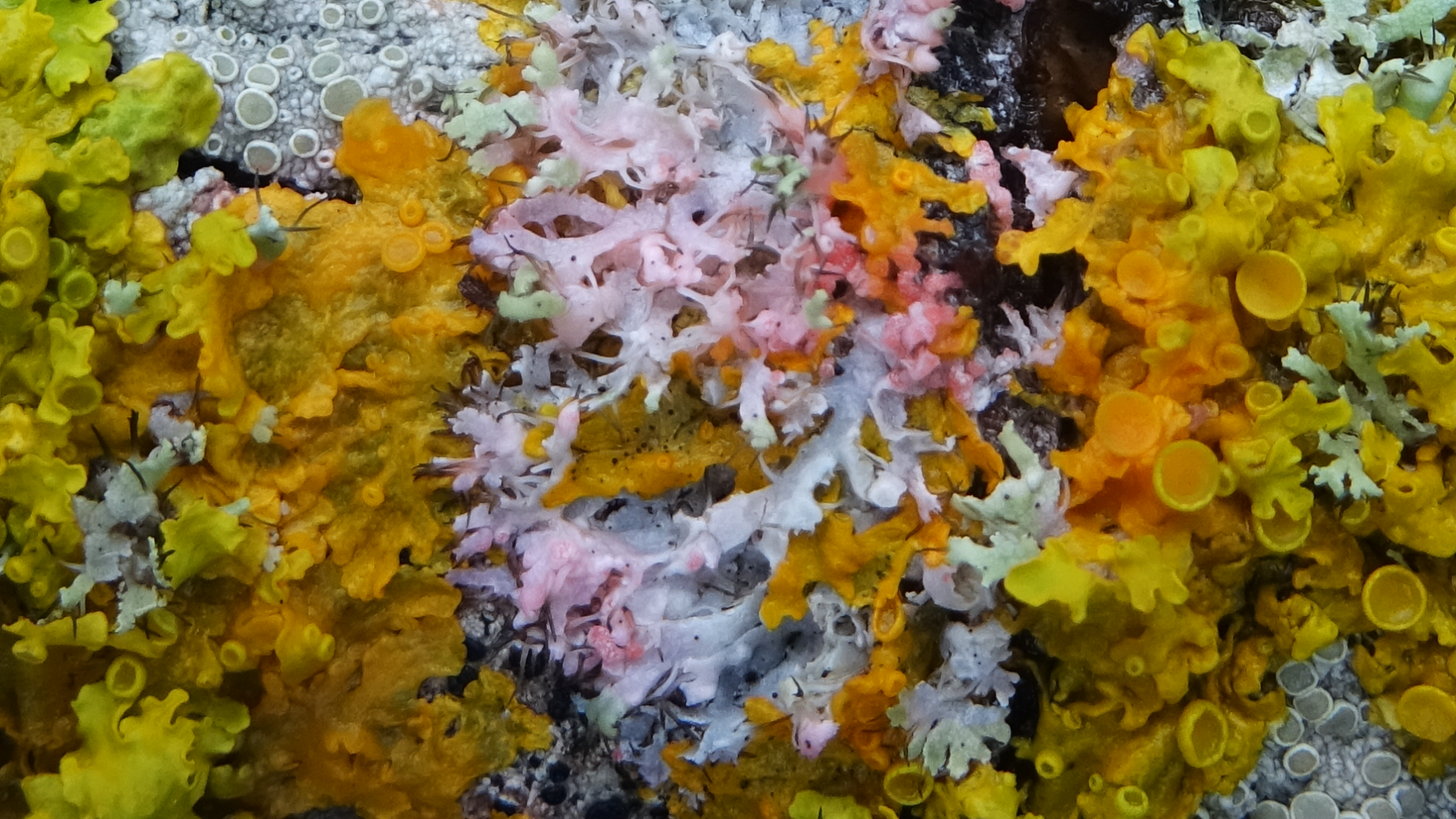
© Raymond Small TQ4792 05/01/2024
The lichenicolous fungus Laetisaria lichenicola is associated with attacking the thallus of lichen Physcia tenella. During January 2016, Brian Ecott made a chance discovery of the pink fungus and searched books and the internet for an answer and eventually found a paper published in America showing a pink portion of lichen. Armed with this information, he contacted Essex Field Club Lichenologist, John Skinner and the London Natural History Society. Dry specimens were sent to specialist Lichenologist, Mark Powell, who examined the specimen under the microscope to compare the details with that of Paul Diederich et al 2011 paper. Details were then forwarded to Dr. Brian Coppins, at the Royal Botanic Gardens, Edinburgh. Brian's discovery was confirmed as the first record in the United Kingdom, thus "Putting Hainault on the Map". During Winter 2024 the pink fungus seemed well-established on trees near Foxburrow Pond.
© Raymond Small TQ4792 03/11/2023
Acorns on Holm Oak
Quercus ilex
near the second car park. One to three acorns, 12-18mm long, are normally found growing on short downy stalks. They have pointed tips and the irregular-shaped cups have scales. Young acorns are green maturing to reddish-brown before dropping off the tree. Holm Oak is an evergreen.
© Raymond Small TQ4792 09/02/2024
Aleeya Sibbons at the Global Cafe with Brian Ecott. Aleeya trained by running up and down Hog Hill in Hainault Forest when younger and now looks to have a bright future in athletics. During 2023 she helped secure a 4x100m relay Gold for Great Britain & Northern Ireland in a record time of 43.04 at the European Athletics U23 Championships at Espoo, Finland.
© Postcard publisher and date unknown. Researched by Sandra Patchett
Alfred Spooner and Esther Boyd married at Mile End during 1903. They lived at The Stores in Lambourne End with nieces Minnie and Ethel Boyd. The property in Manor Road had Hill Cottage and Forest Cottage on one side, and Rose Cottage and Thirza House on the other. Nearby stood Young's Farm. Alfred was born in Brentwood during 1868 and worked as a baker. Esther and her nieces were all born in Lambourne End and were baker's assistants. At the time of the 1911 Census both nieces were single. By 1921 the Spooners had moved to Bexley, Kent, where Alfred worked as a painter in Bexley Mental Hospital. The nieces no longer lived with their aunt and uncle.
Thank you to all contributors.
